In this article, you’ll find more than 50 mental model examples that will make you understand the world and human nature better. So you can become more successful in business and life.
What is a Mental Model?
A mental model is your thought process to explain how something works.
Think about it.
Probably when you were young, you heard someone talking about the pros and cons of a decision. And from that day on, you started doing the same for your own decisions.
Well, it’s a simple mental model you created by observing. And you used that repeatedly in your life, which helped you to make better decisions.
But most people are never aware that they use mental models.
So they don’t actively look for better ones to improve their thinking, hence their results in business and life.
But I have good news.
Since you somehow landed on this page, you are already aware.
Better mental models = better decisions = better results.
In this post, you’ll find 50+ of them them with short explanations.
So this post is an index, not a deep dive into each idea.
If you’d like to know more, click the links to go to the full article about that mental model.
Ready?
You can find them in five categories:
Mental model examples to become more successful in life
1. Lateral Thinking
Sometimes, logic becomes a burden to find the right solution to complex problems.
Because it limits us to logical constraints before we discover all other possibilities.
Lateral thinking forces you to break the barriers that limit your creativity.
Like asking “What would Napoleon do?” to solve a business problem.
So you can generate as many ideas as possible to find solutions nobody else can see.
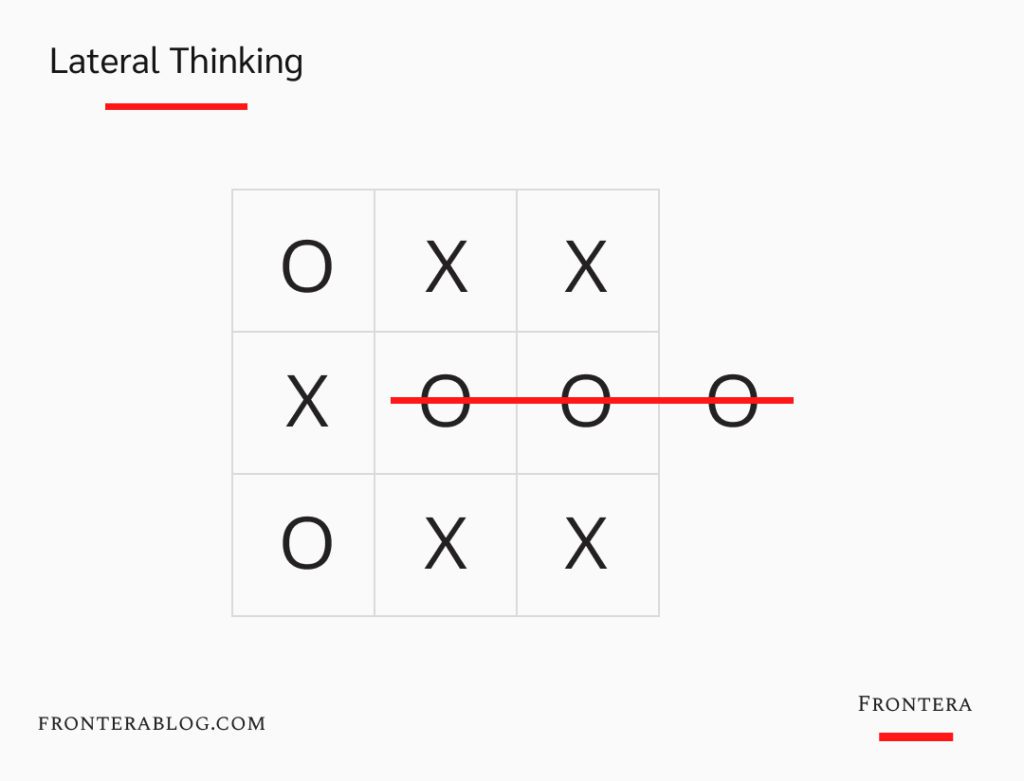
2. Input Goals
Most of the goals you set are output goals, based on outcomes (becoming a millionaire or getting a six-pack).
But the outcomes are never under your control.
Focus on input goals to achieve your goals.

3. Information Arbitrage
Everybody has specific knowledge that they can leverage by trading it.
Information Arbitrage is benefiting from the knowledge gap between you and others. Observe people, companies, and sectors to find where your skills are more valuable.
As an example, Facebook/Google Ads knowledge is common for digital businesses.
But many physical businesses lack this knowledge, which creates an information arbitrage opportunity.
4. Fosbury Flop
Dick Fosbury changed the high jump when he rejected to listen to people who say “We’ve always done it this way.”
He asked himself: “What if there is a better way?” and invented his own style to dominate the high jump. And after he won his Olympic Gold Medal, all high jump athletes started using his technique.
Steve Jobs did the same with iPhone. Elon Musk with Space X.
What can be your Fosbury Flop?

5. The 5/25 Rule
List the 25 things you want to achieve.
Decide on the 5 most important ones from the list.
Now you have 5 goals that you’ll focus on this year.
What will you do with the rest?
You’ll avoid them at all costs until you achieve the 5 first. Because they are distractions that will stop you from achieving your priorities.
6. Compartmentalization
Napoleon’s secret to handling many complex topics with full attention.
It’s not multitasking; it’s extreme unitasking.
To use it, give your full attention to one single task (or project) every time. Never multitask.
7. Resistance
Steven Pressfield’s villain from his book The War of Art.
Resistance is inside you. It’s a force that would like to keep things the same.
You can feel it whenever you’d like to do something useful for yourself.
Usually, it shows its face in the form of procrastination. Sometimes fear, anxiety or arrogance.
Use it as a filter to understand what’s the important thing in your life. Because the stronger the Resistance, the more you have to do it (e.g. quitting your job to start your own business).
8. The 80/20 Rule
20% of the causes create 80% of the outcomes. Also known as The Pareto Principle.
Identify 20% of the activities that give you 80% of the results.
If it’s a positive outcome activity (investments, productivity) focus on that 20%.
If it’s negative (causes of stress, or bad health) eliminate that 20% first.
9. Leverage
Leverage —as a concept— is getting the maximum output with the same input.
Money, labor, code, and media are forms of leverage.
You can write 300 words on a paper (low leverage) or on a blog (high leverage). If you publish it on a blog, millions of people can read it without any additional effort from you.
So use it as a filter to amplify your impact.
Simple example: If you keep receiving the same questions from your customers or followers; don’t answer them one by one. Either create a product or an FAQ.
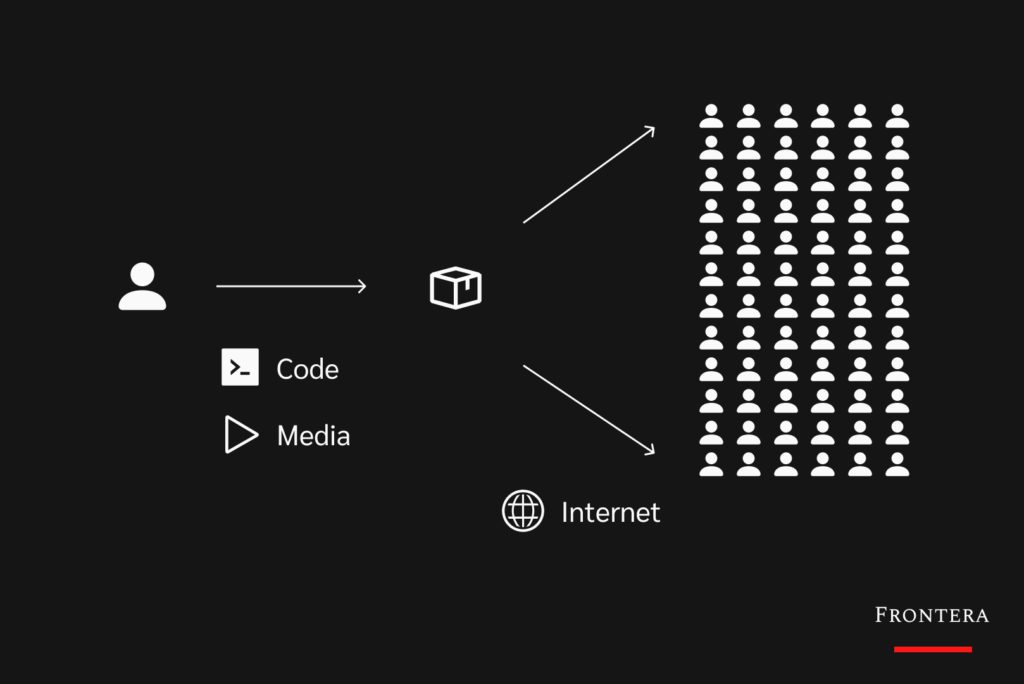
10. Redundancy
Efficiency brings hidden risks.
Not only for supply chains but also for your life.
Redundancy is not only insurance when the crisis comes, but also a way to benefit from it.
Extra cash, multiple income streams, and survival skills are good examples.
11. The Snowball Effect
The power of compounding.
Money, effort, and knowledge compound in the long term in ways you cannot imagine.
Many people don’t get the benefits from the snowball effect as they’re impatient and interrupt the snowball’s momentum.
Warren Buffett’s net worth is a good example:

12. Proactive Procrastination
The illusion of making progress while delaying the actual actions.
People read books, watch videos and make plans about doing something, but don’t take any concrete steps.
So become aware of your actions to know if you are proactively procrastinating.
13. The 5-minute Rule
A method to fight procrastination.
Convince yourself to start the task you’d like to do for 5 minutes. That’s it.
If you feel like stopping after 5 minutes, you can stop.
But once you get going, you tend to not quit until you finish the task.
14. Unlearning
Unlearning is identifying the limiting beliefs, biases, and habits that don’t serve you and removing them.
Like “I’m terrible with numbers.” or “I can’t make a speech in public.”
To unlearn, you can use reframing.
Change “I’m not good with languages.” to “I’ve never put in a serious effort to learn Spanish. I can learn it easily if I want to.”
Sometimes, unlearning is even more important than learning new things to keep growing.
15. Luck Surface Area
Imagine lucky events as random arrows flying around. They are like Eros’ arrows; you want to get hit.
The best way to get hit by a random arrow is to increase the surface area of the target — in this case, your luck surface area.
The bigger the surface, the more chances you have to get lucky.
To expand it: share what you’re working on with the world, meet new people, build a personal brand, and have in-depth knowledge on different topics to identify opportunities.
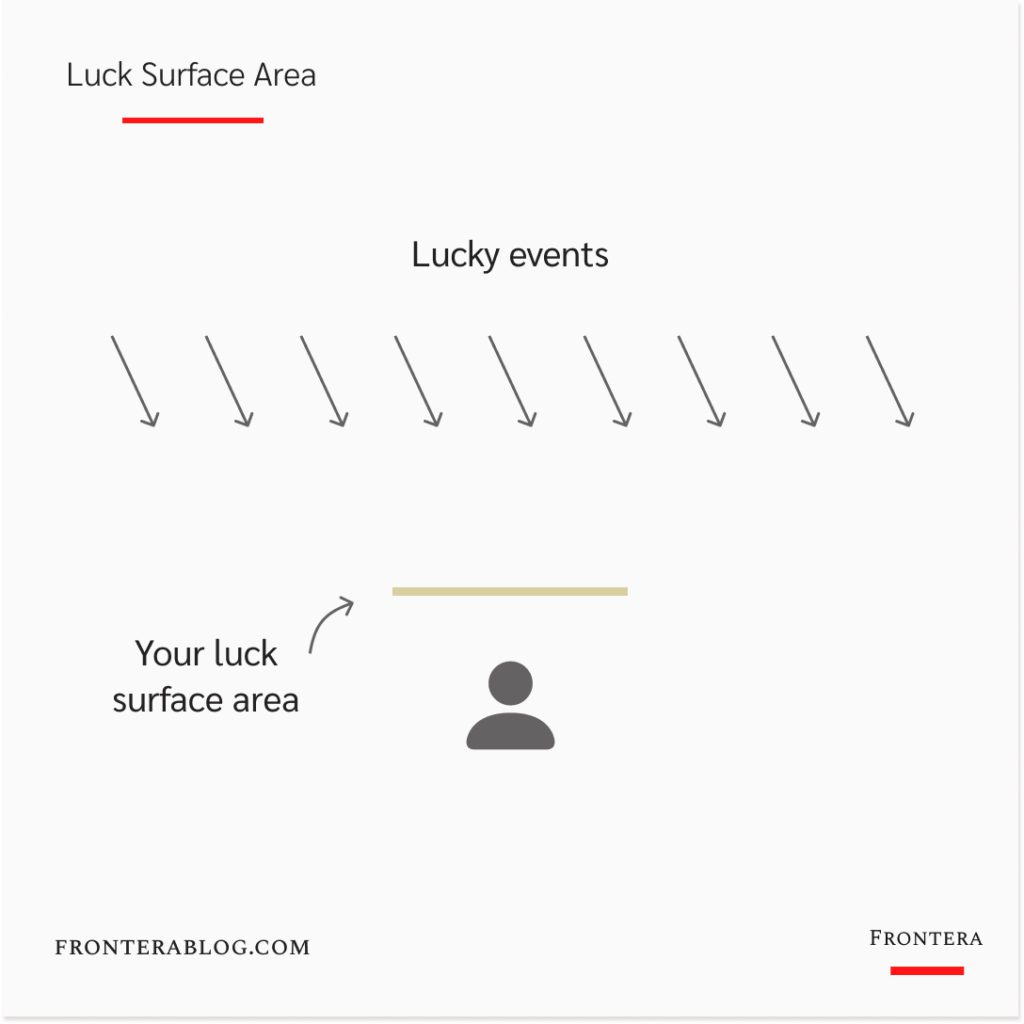
16. The Eisenhower Matrix
President Eisenhower had a method to use 24 hours most effectively which was later called by his name: Eisenhower Matrix.
It’s a simple matrix that allows you to make a distinction between what is urgent and important.
Urgent tasks require your immediate action. Important tasks are the ones you need to do to achieve your goals.
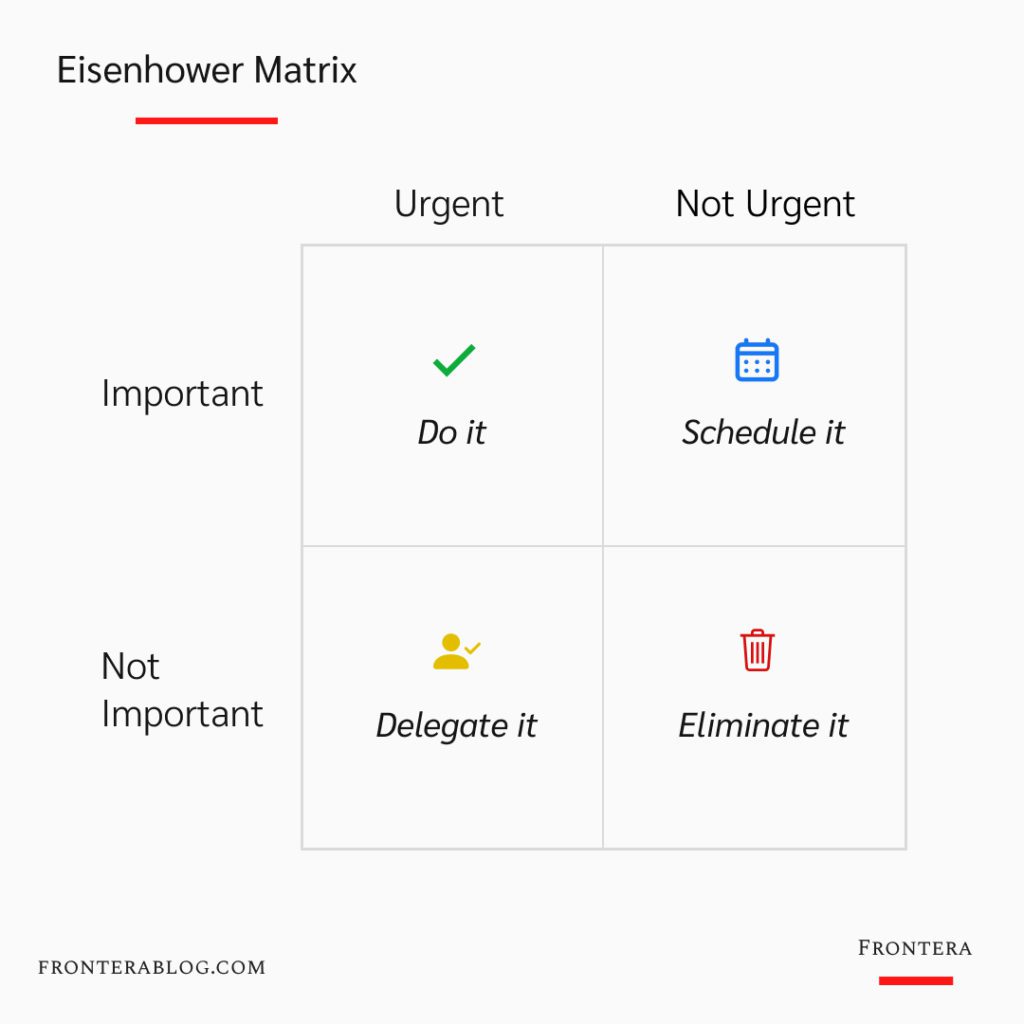
17. The Feynman Technique
The Feynman Technique is a teach-to-learn method that focuses on understanding.
Richard Feynman —legendary physicist and Nobel Prize winner— used it to learn complex ideas fast.
You explain what you’re learning to an imaginary 10-year-old audience in simple words without jargon.
It allows you to find and fill your knowledge gaps, and understand the topic better as you try to explain it in simple language and analogies.
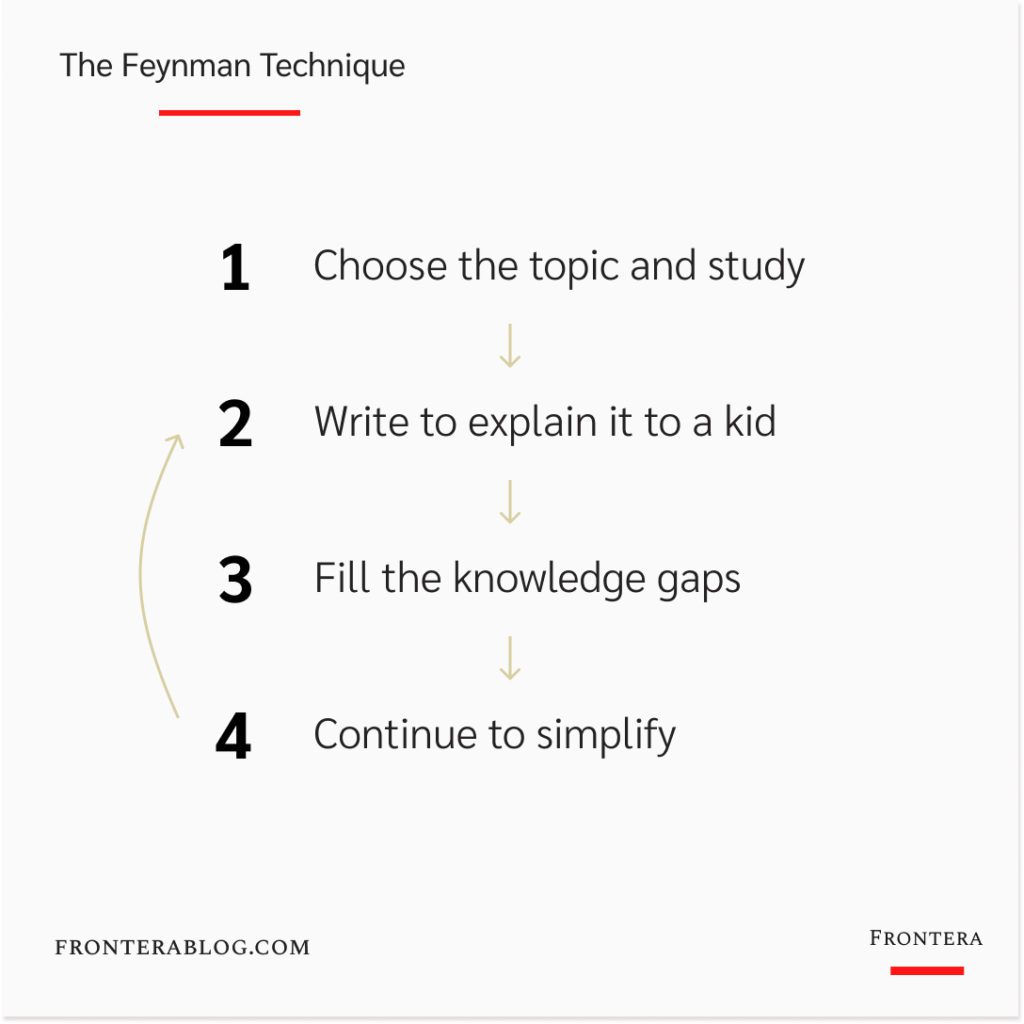
18. Talent Stacking
Talent stacking is increasing your chances of success by becoming good at many skills, rather than trying to become the best at one.
Because becoming the best at one thing is almost impossible. While becoming good at different skills is an easier way to extraordinary success.
One example is Alexandra Botez. She is a good chess player, entertainer, and social media creator. But she is not the best at any of them.
Her unique talent stack made her the best chess streamer in the world.
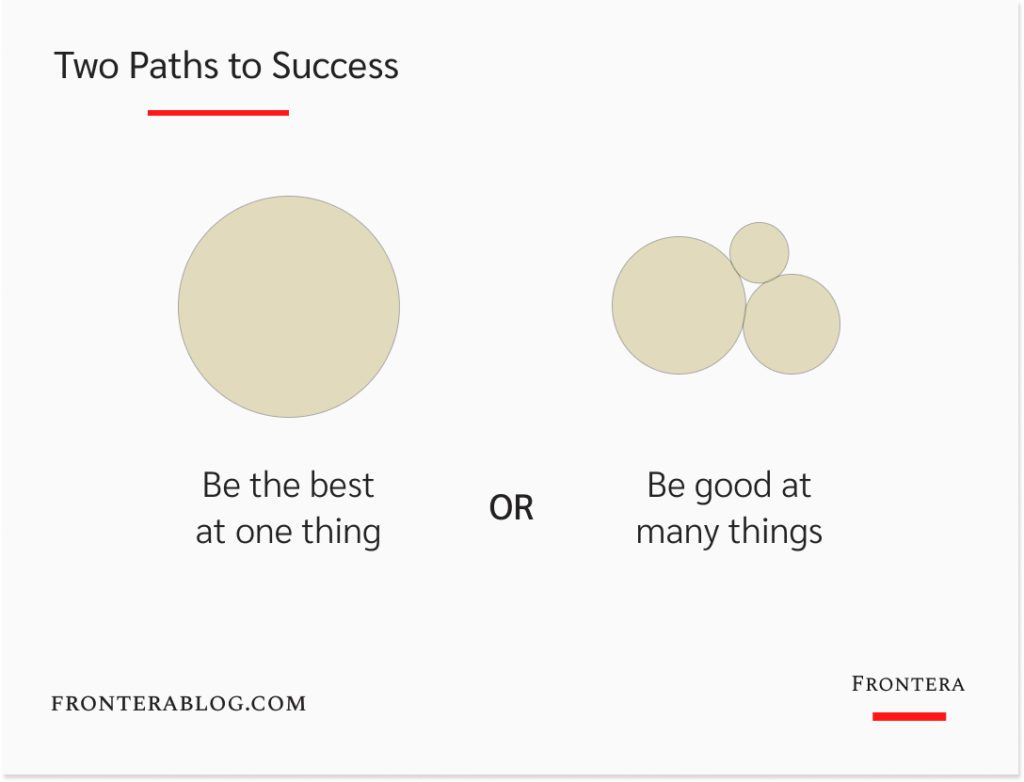
19. Antifragility
We know fragile things.
They break easily with a little stress and disorder.
Antifragile things don’t just resist a shock, damage, or crisis but also thrive under these conditions. It’s a concept developed by Nassim Taleb in his book Antifragile.
Some other mental models on this page (redundancy, optionality, and barbell strategy) are different ways to make your career and business antifragile.
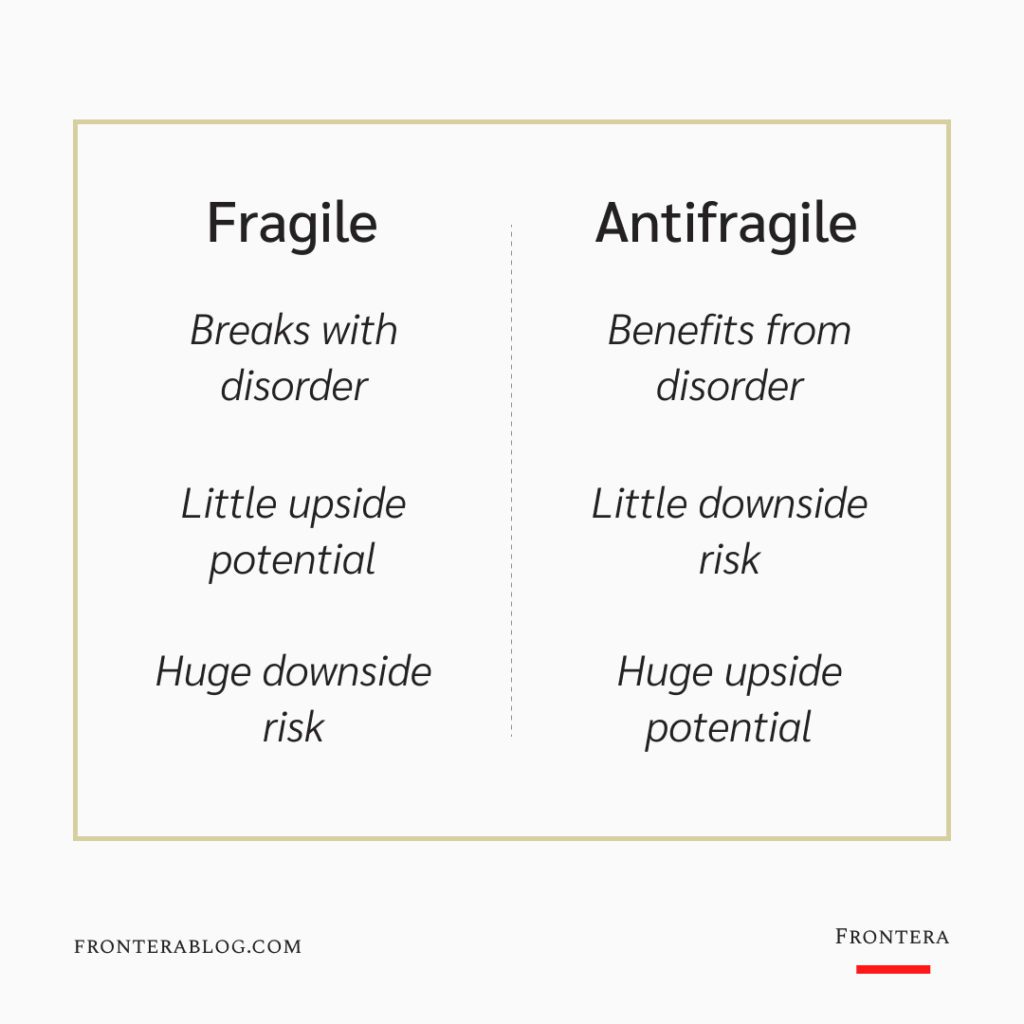
20. Optionality
An option in life is having the right, but not the obligation, to perform an action.
And optionality is having many options to choose from.
But a good option should have asymmetry between its cost and potential benefit. The bigger the asymmetry is, the better the option.
So with optionality, the idea is to have more options with low cost, but unlimited upside.
As an example, writing online has more optionality than keeping a private journal. It has the same cost, but unlimited upside potential if people like what you write about.

21. Picasso’s Bull
Hundreds of discarded ideas and prototypes allowed the Apple team to come up with the iPhone.
Thousands of iterations and paintings made Picasso one of the best painters of history.
Picasso’s Bull shows us the power of iteration.
Whatever you’d like to achieve in life, the path to success is the same: Quantity brings quality.
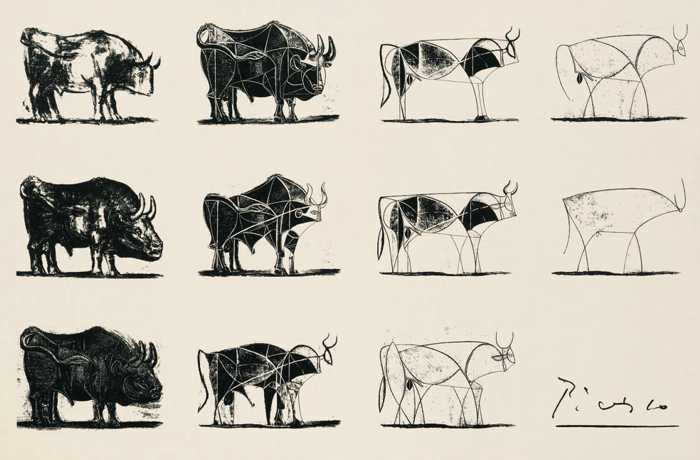
22. The Pygmalion Effect
Pygmalion Effect is when higher expectations lead to better performance.
Because they affect others’ actions toward you, hence your beliefs about yourself, and your actions toward others.
It’s a self-fulfilling prophecy.
So have higher expectations from people around you, and make sure they are aware of your expectations.
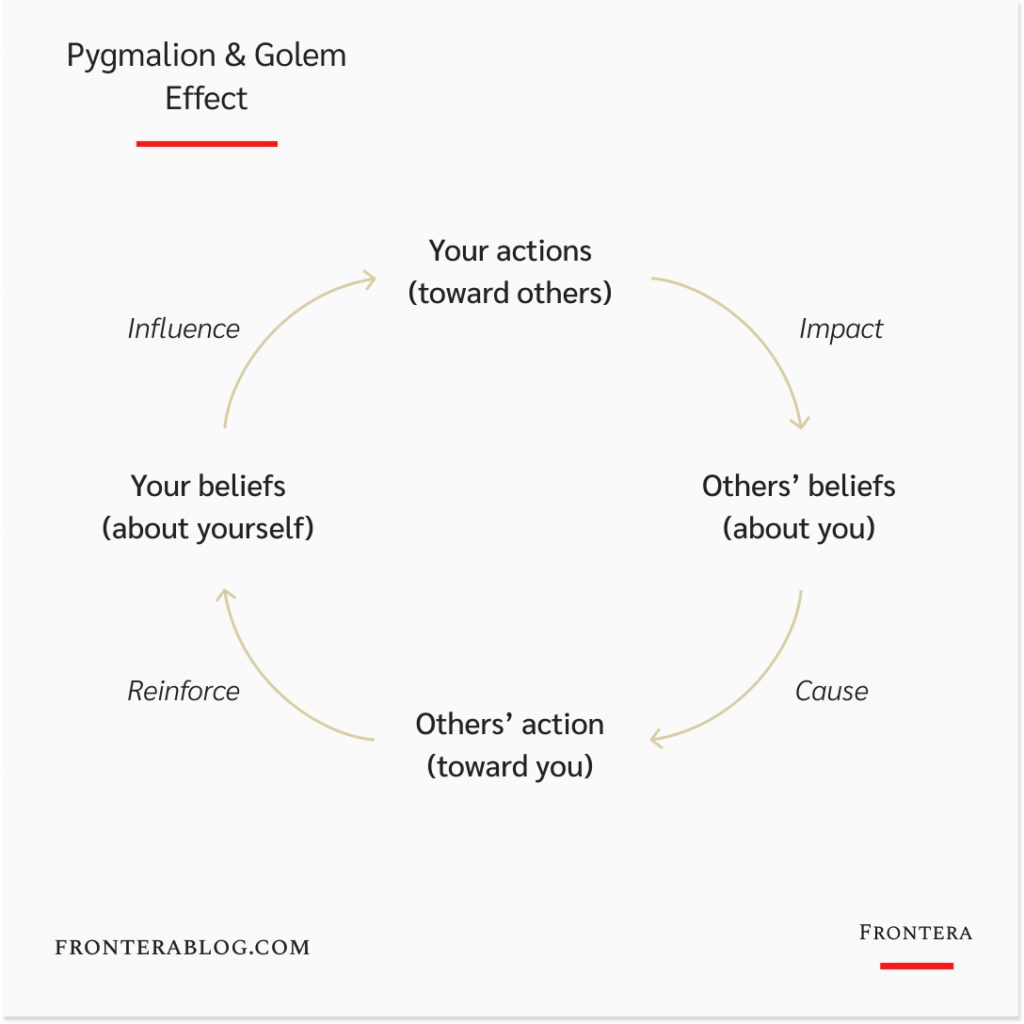
23. The Barbell Strategy
Nassim Taleb’s strategy for portfolios and life.
You build an imbalanced barbell with 90% safe and 10% risky options. So you avoid ruin while increasing your optionality.
Like 90% bonds and 10% high-risk (hence high return) options.
Or having a steady income (a low-intensity 9-5 job or freelancing), but also working on side projects with unlimited upside.
24. Affirmations
Affirmations feel like nonsense, thanks to some “the law of attraction” gurus.
But they actually help you to achieve your goals.
Because they focus you on your most important goal, make you remember your commitment, and fuel your optimism.
So take a goal you want to achieve, and write it (by hand) every day 10-15 times in a self-affirming way.
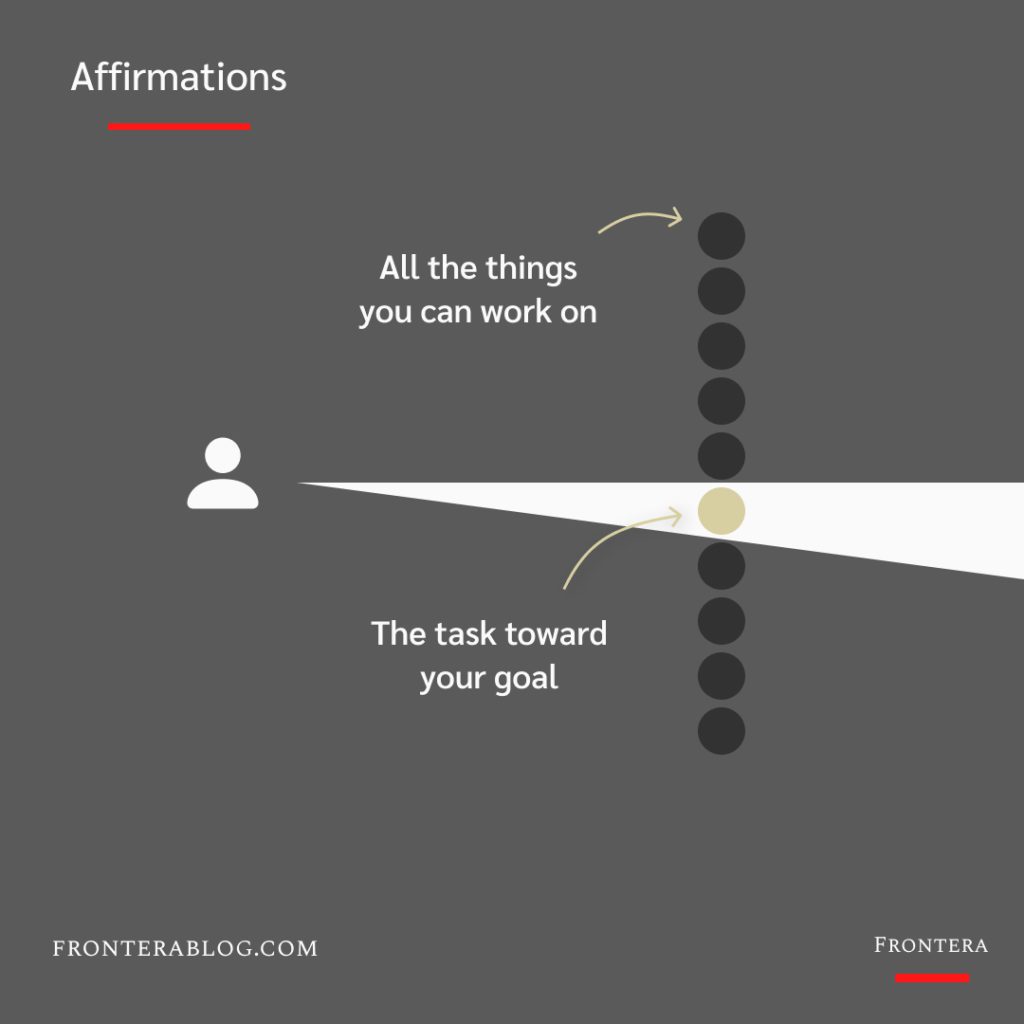
Mental model examples to become a better decision-maker
1. Second-Order Thinking
Every decision has consequences. But consequences also have consequences.
Second-order thinking is evaluating not only the apparent first-order consequences; but the events that can occur following them.
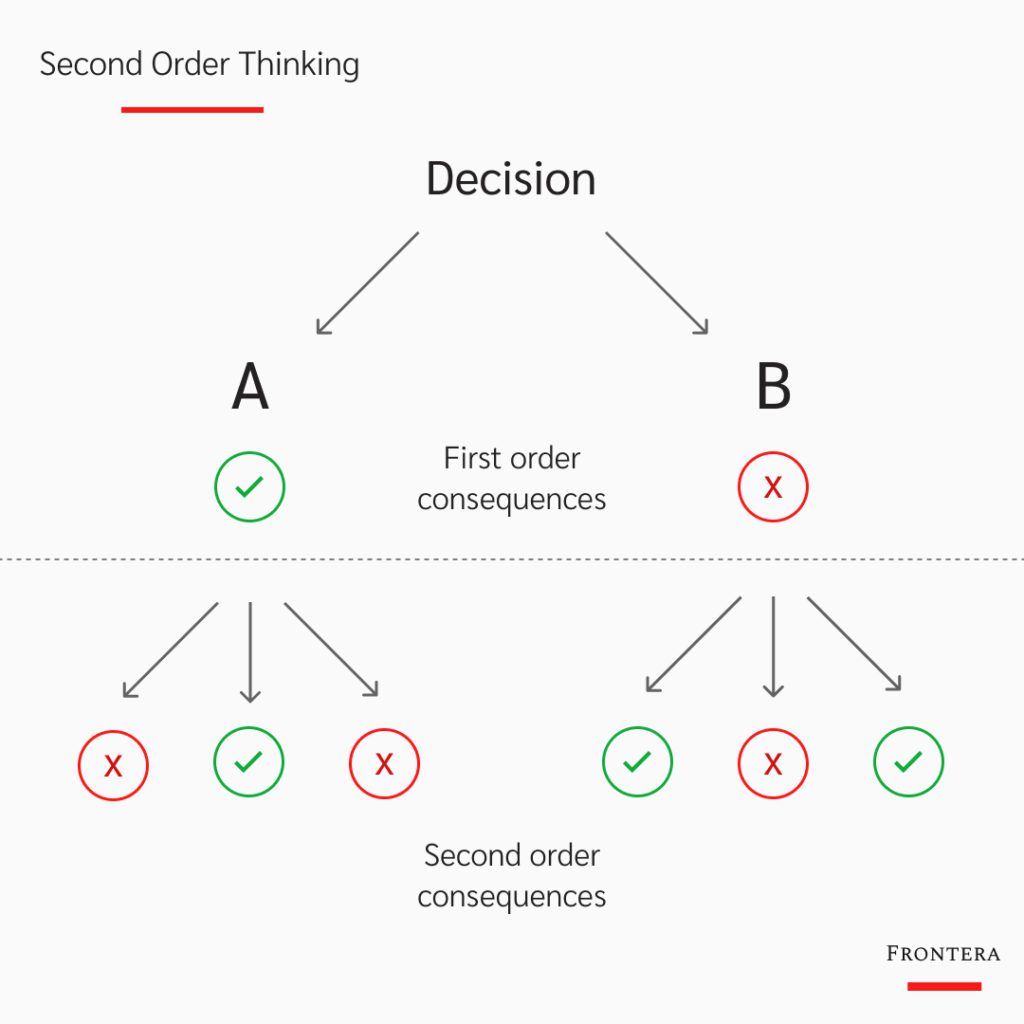
2. Inverse Thinking
When options are broad, making the right decision is hard.
Inverse thinking makes it easier by avoiding the negative.
So instead of: “What should I do to be happy in my life?”
Ask: “What are the things that would make my life miserable?”

3. Regret Minimization Framework
Jeff Bezos’ mental model to make big life decisions.
Before quitting his lucrative Wall Street job and founding Amazon he projected himself as 80 years old.
Would his old self regret not joining the internet wave and selling books online?
After framing the decision this way, he clearly saw his path. He quit his job and became one of the early adopters of the internet.
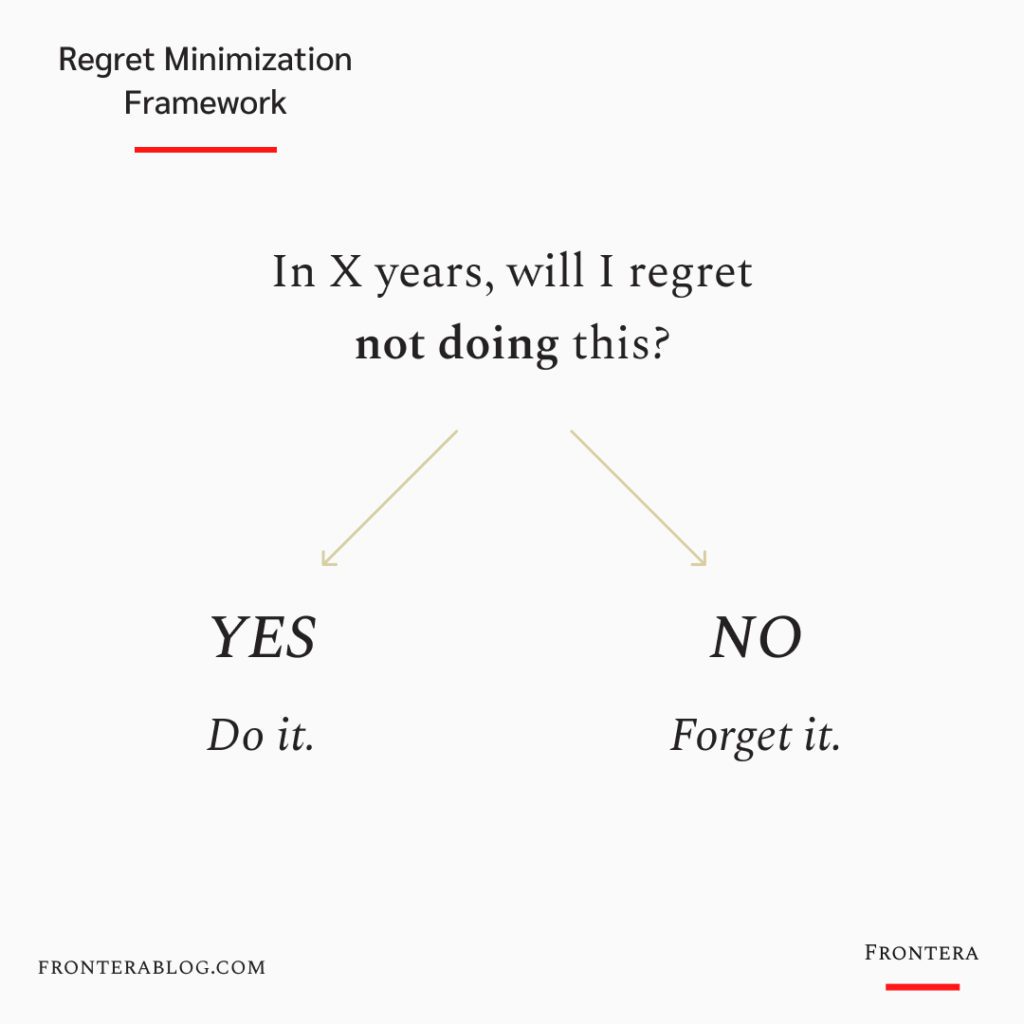
4. Via Negativa
It means “The Negative Way” in Latin, or as Nassim Taleb puts it solution through subtraction.
Instead of looking for things to add to a system, a project, or your life, you look for things to eliminate.
Want to improve your health? Don’t buy expensive supplements; remove smoking, sugar, and drinking.
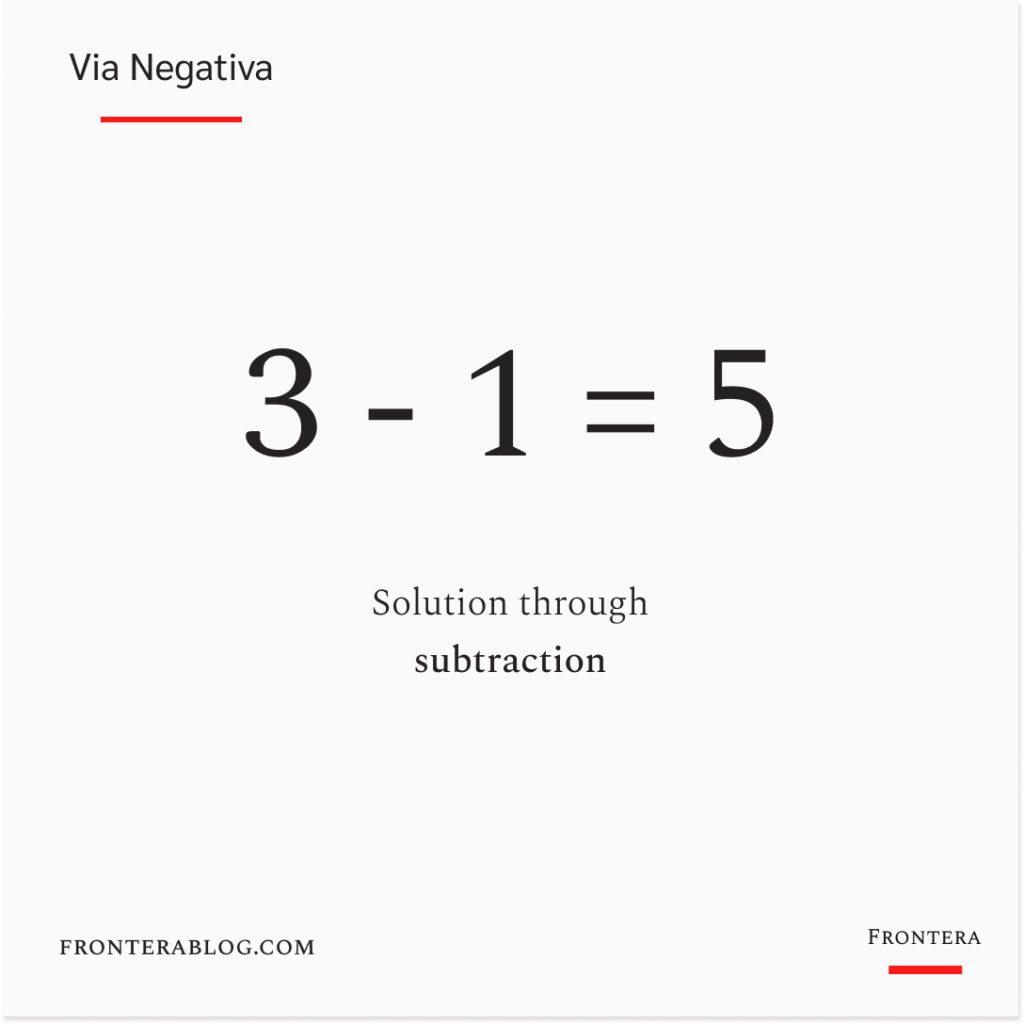
5. A-B-Z Framework
Having a long-term goal for yourself is good.
But it might be overwhelming when you start thinking about how to get there.
The A-B-Z Framework makes it easier: Assess where you are (A), set your direction (Z), and decide on your immediate next step (B). Take that action.
Idea Credit: Shaan Puri
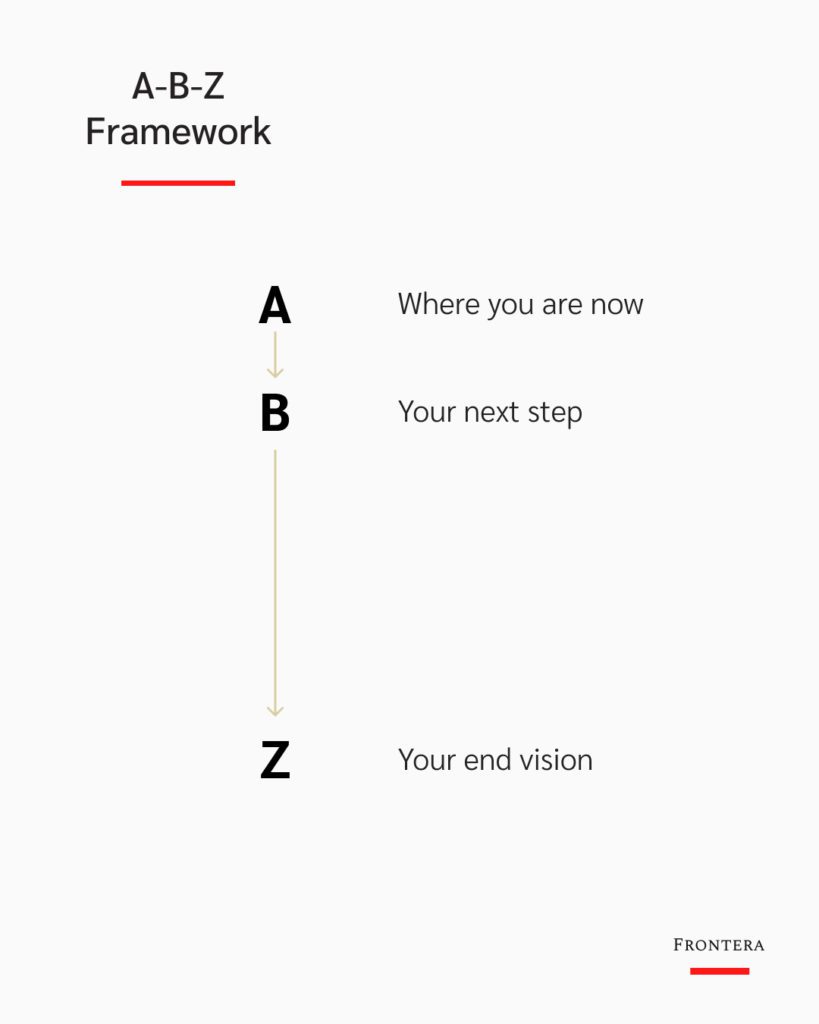
6. Personal SWOT Analysis
SWOT Analysis is a tool that executives use to have situational awareness of their companies: strengths, weaknesses, opportunities, and threats.
Personal SWOT analysis makes you reflect on your life as you haven’t done before.
It paints a picture of your current situation, so you can find the best path for yourself.
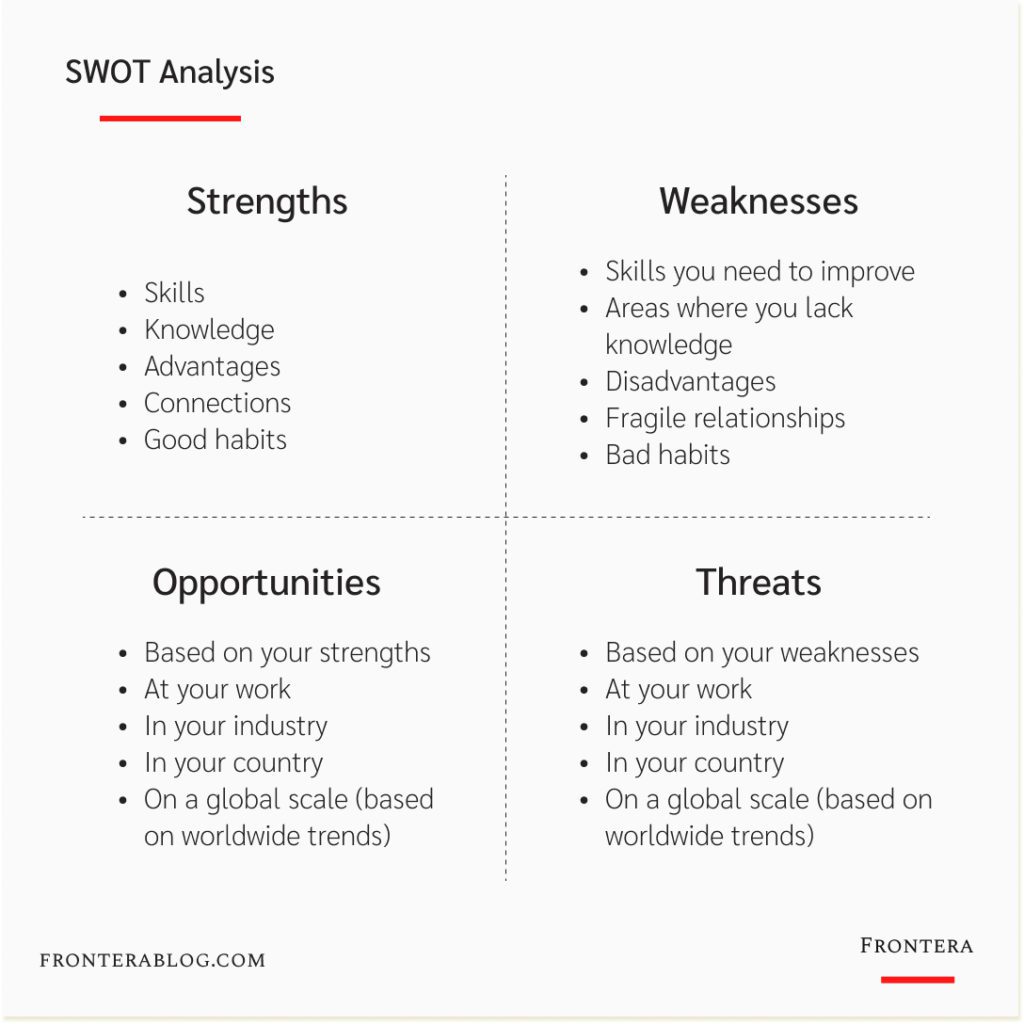
7. 10-10-10 Rule
The 10-10-10 Rule is asking how you’ll feel about a decision in 10 minutes, 10 months, and 10 years.
Makes your decision easier by showing you some of the second-order effects.
8. Thinking in Bets
Thinking in bets is a decision-making framework developed by former professional poker player Annie Duke.
Because of luck, bad decisions can create good outcomes. Or good decisions can create bad ones.
And people judge the quality of decisions based on the outcomes. But this is a flaw that creates a dangerous illusion for future decisions.
Instead, think of every decision as a bet by calculating the expected value to take luck (hence probabilities) into consideration.
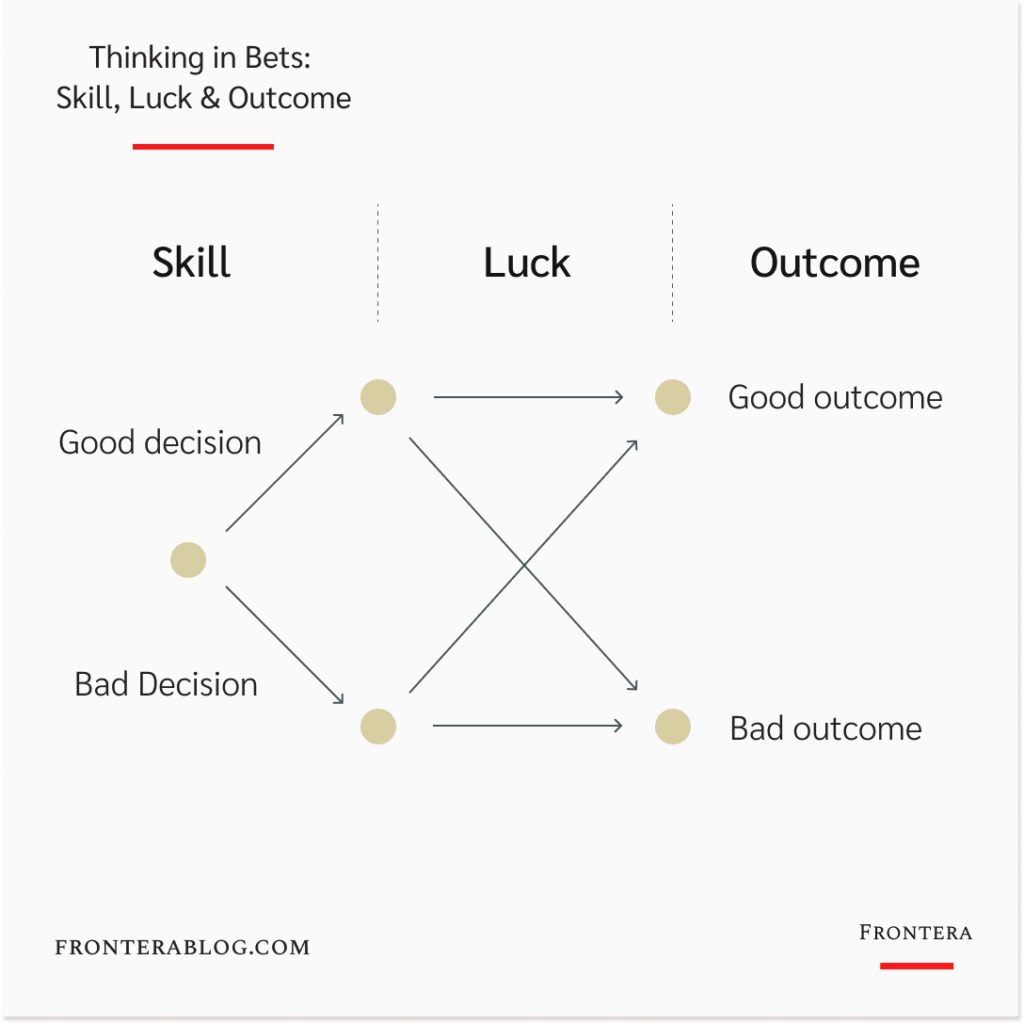
9. Steel-manning
Steel-manning is when you strengthen an opposing argument to understand it better, so you can change your mind (if needed) and make the right decisions.
It allows you to see the thought process behind it, the weak links, and the solid points.
It’s the opposite of straw-manning where people distort arguments to refute them.
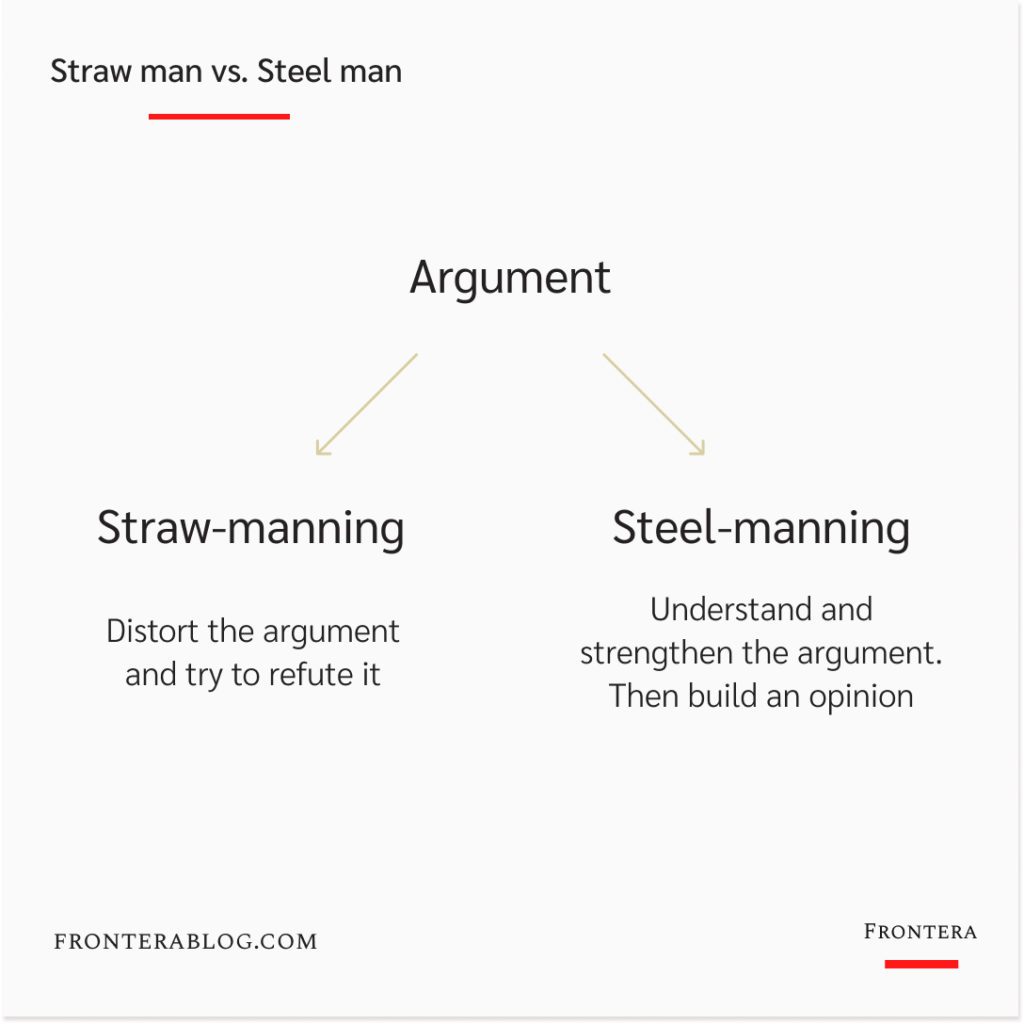
10. Uncertainty Matrix
There are four levels of uncertainty. The uncertainty matrix allows you to differentiate them so you can manage uncertainty better.
- Known knowns: When you know something and you are aware that you know it. If you have a product that sells a lot, you know there is demand for it.
- Unknown knowns: Hidden knowledge. You might know how to manage people well and not be aware of it. Or a business might have useful data on customers’ behavior but never turned it into insights.
- Known unknowns: Risks you are aware of. If you leave home during rush hour, you are aware of the risk of traffic and being late. If you start a business, you expect some competitors to copy you.
- Unknown unknowns: Risks you don’t know exist. The real risk. These can cause you the most harm as they catch you unprepared.
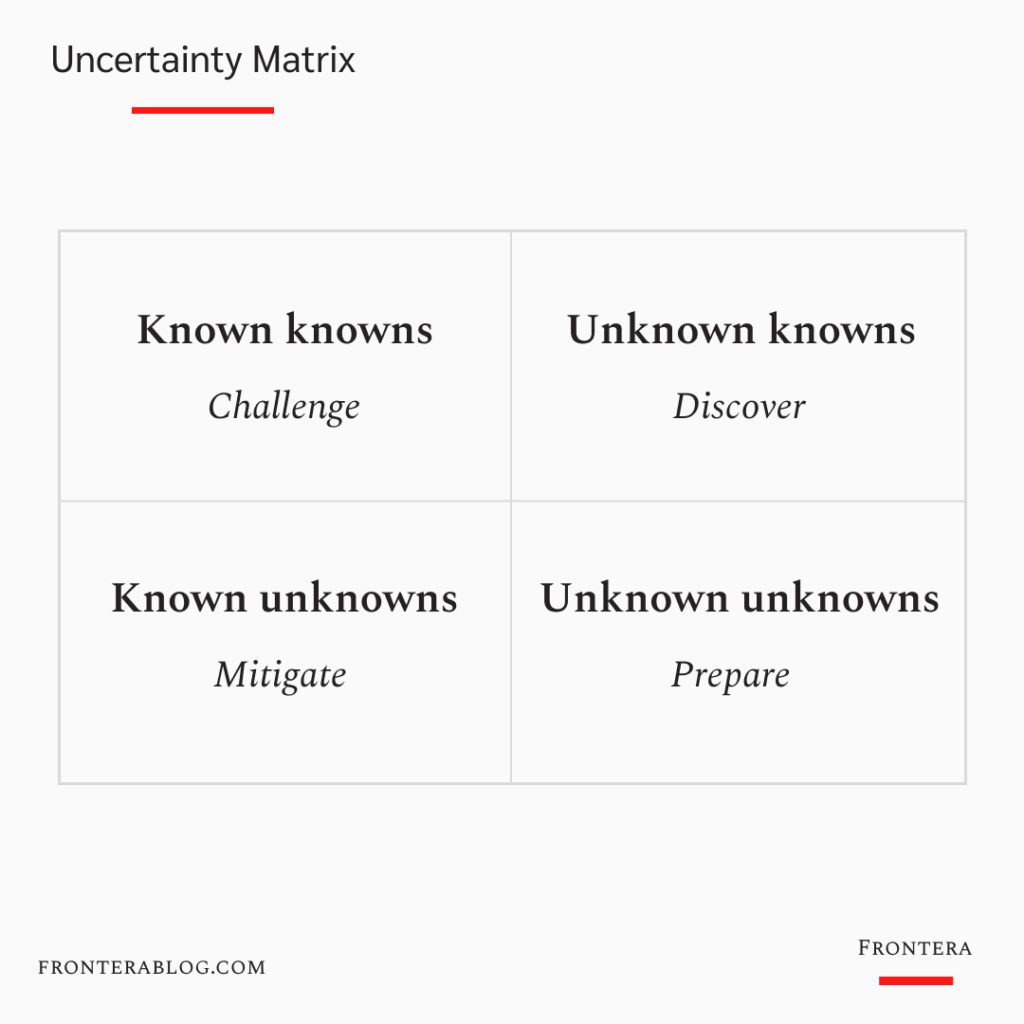
Mental model examples to find the blind spots of your mind
1. Halo Effect
People do judge a book by its cover.
If you experience something positive at first (nice packaging of a product or a well-dressed person), you intuitively have a better feeling about all other aspects of that brand or person.
Halo Effect is one of Apple’s marketing principles. That’s why they’ve been paying attention to all details of the brand; the packaging of iPhones, the design of the stores, and new product presentations…
2. Commitment Bias
Your mind tries to be consistent with your past actions and words.
So people get stuck with ideas, investments, or business decisions that don’t make sense anymore.
Only because they had committed to them with their money, effort, or words.
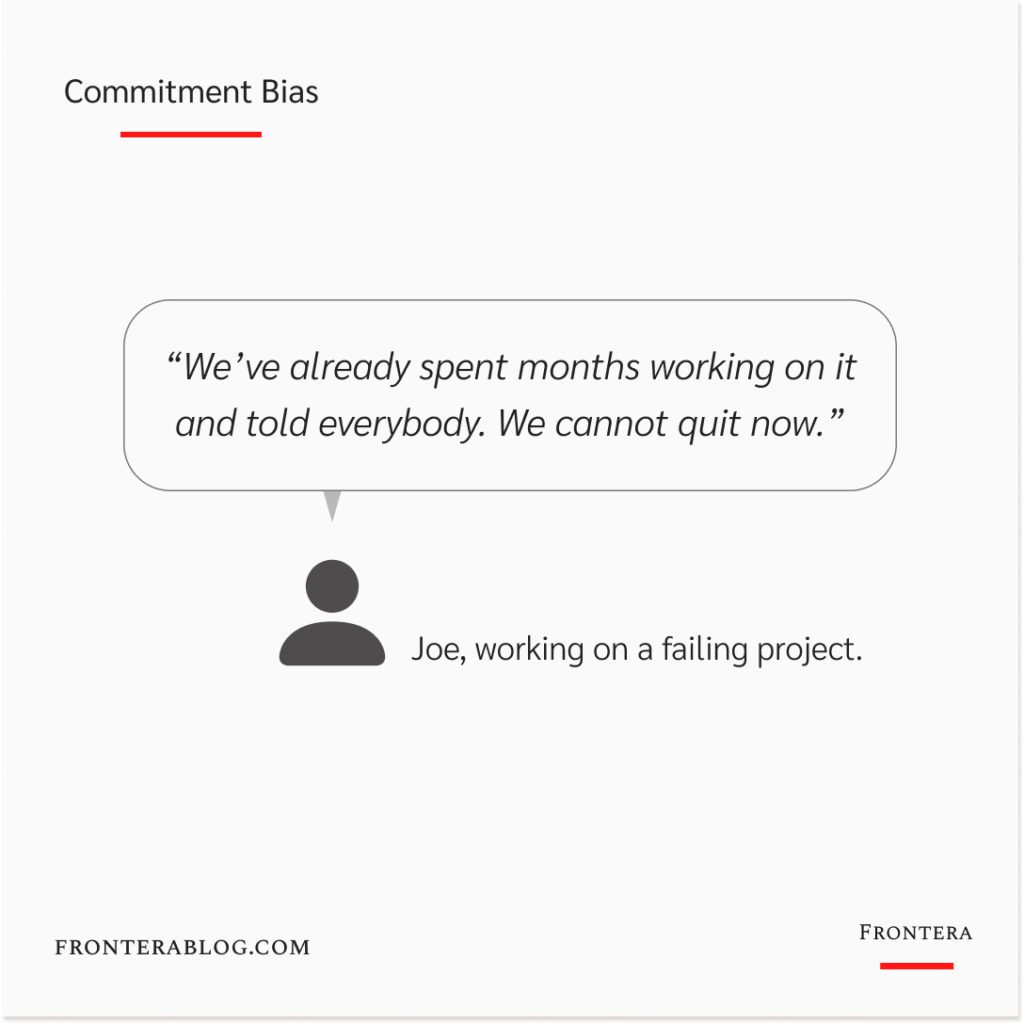
3. Hindsight Bias
After we know how things turned out, our minds ignore all other possibilities and explain the past as it was inevitable.
The danger with Hindsight Bias is its impact on your future decisions. It creates false confidence.
People think if it’s so easy to explain all past events they can also predict the future. So they make terrible decisions.
To avoid it never try to predict the future; prepare.

4. Concorde Fallacy
Thinking like a losing gambler.
It occurs when people allow the past cost of something to influence their decision-making today. The past cost –which is unrecoverable– can be time, money, or emotion.
Concorde project was a great example of it: the British and French governments continued to spend billions on the project despite its obvious flaws.

5. The Paradox of Choice
After a certain level, each additional option makes your decision harder. More becomes less.
Only limitations can help you to break it.
It’s heavily used in marketing by reducing the options of potential customers.
6. Gambler’s Fallacy
If the last 8 numbers were red on a roulette table, people think the 9th one is more likely to be black.
But the probability doesn’t change based on past events.
So a stock that went lower for the last 10 days can still go lower.
7. Status Quo Bias
People tend to think the status quo (the existing state in Latin) is good by default.
The way we live, the things we use, or the processes we have in business…
But there is always a better way than the status quo.
So ask these two questions to actively look for improvement:
“What opportunities do I lose by maintaining the status quo?”
“If I continue to say yes to this, what am I saying no to?”
8. Association Bias
Association bias is when your mind takes the emotion you feel as a cue to build an opinion about a person, brand, or event.
You like companies that associate themselves with positive feelings.
Like Coca-Cola and happiness.
Or Harley-Davidson and freedom.
But in the end, a sugary drink is not good for your health, and a motorcycle cannot make you free.
To avoid it, fight the initial opinions from associations. And to benefit from it, always associate your “brand” with positive feelings.
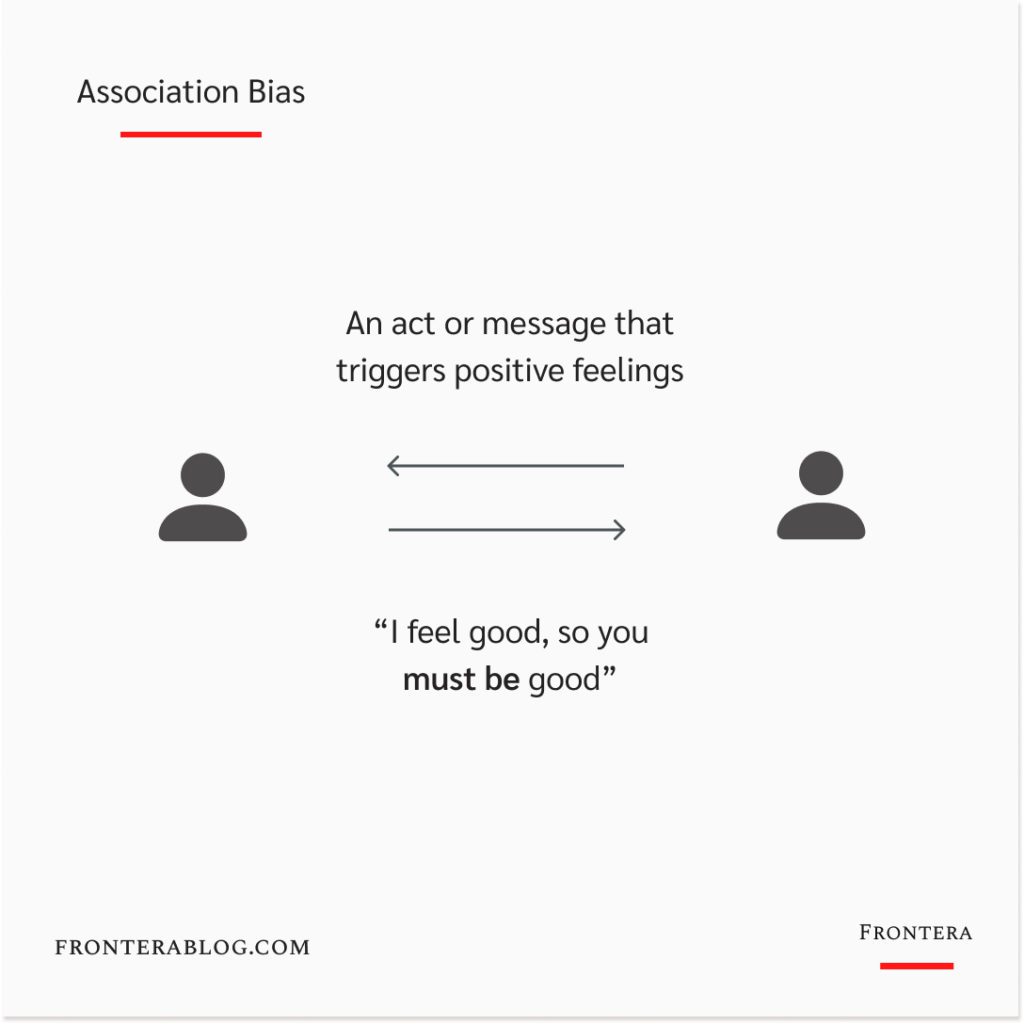
9. The Anchoring Effect
The anchoring effect is when people depend too much on the first piece of information they get for decisions.
Let‘s say you go to a store.
If there are many $300 shoes, the one with a $150 label feels cheap. In another store, the same pair of shoes become expensive if they are among the $75 ones.
Even irrelevant numbers we see before a decision can become anchors.
To avoid it, always question your starting points.
And to gain from it, make your work incomparable to have pricing power (e.g. iPad instead of tablet).
Also, always be the first person to mention a price in a negotiation. It will act as an anchor and the other side will adjust from that.

10. Bias For Action
Bias for action is a mental error that causes us to act even when inaction is the best decision.
It’s an evolutionary behavior that has helped us survive for thousands of years.
But sometimes this tendency fails us in the modern world.
So people take action as a reflex without proper reasoning and make mistakes.

11. Survivorship Bias
We pay attention to winners.
And forget about losers.
Survivorship bias is dangerous because it distorts our reality and creates the impression that success is easily achievable. Whether it’s a new business venture or an investment.
Look for silent evidence (failures) to avoid it.

12. Salience Bias
Our minds pay attention to what’s salient.
If you see a red apple in a basket full of lemons, the apple gets your attention.
But sometimes, this becomes a problem.
Because when we pay more attention to what’s noticeable —whether an object, trait, or event— we ignore less prominent but more relevant ones.
And this is called salience bias.
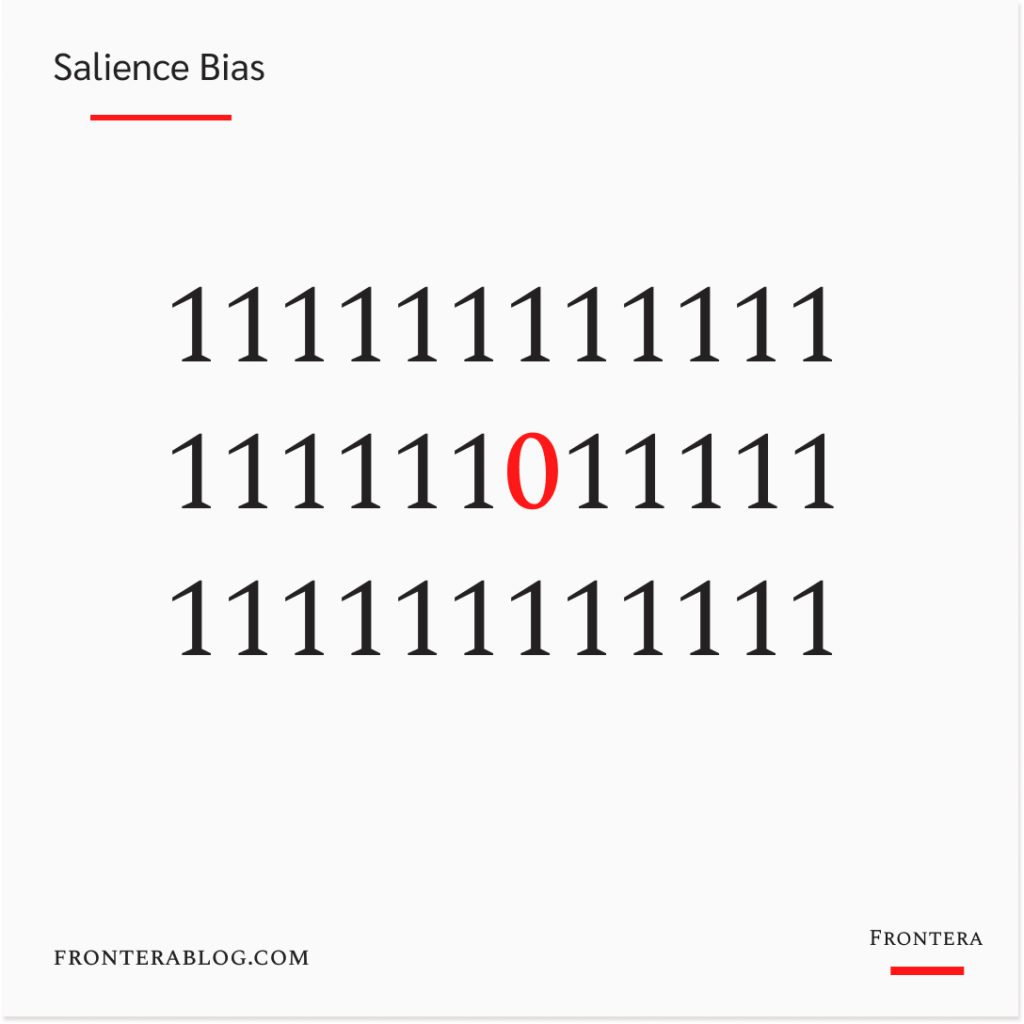
Mental model examples to understand human nature better
1. The Lindy Effect
As we get older, we have less time to live. But ideas don’t have a lifespan.
According to The Lindy Effect, the older an idea, a technology or a company gets, the longer it will live in the future.
It’s aging in reverse.
Some examples are the wheel (technology), Sun Tzu (ideas), and Coca-Cola (company).
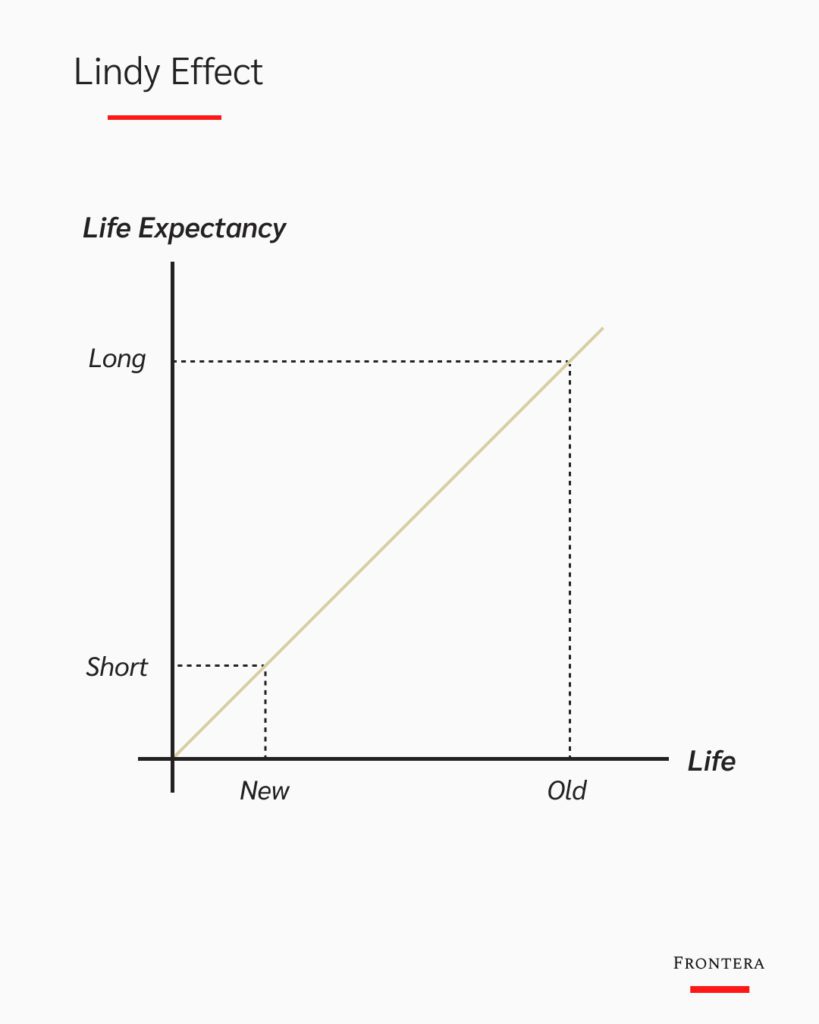
2. Goodhart’s Law
“When a measure becomes a target, it ceases to be a good measure.”
Measures become targets because incentives drive people.
A customer service agent is incentivized for the results of a survey, not for actual customer satisfaction.
So an agent might be pushy —hence reducing customer satisfaction— to get more survey responses from customers.
3. Argumentum ad populum
Argumentum Ad Populum (Latin for “appeal to the people”) is a fallacy when people accept what is popular as true without logical reasoning.
“University education is necessary for success.” is an example. We take it from society without thinking it through ourselves.
4. Parkinson’s Law
Projects expand to fill the time available for their completion.
So even if the project with a two-week deadline could be finished in three days, you’d still tend to use all the time you have.
And the additional time you spend wouldn’t even improve the quality of the work.
Hence, people waste a lot of time and effort –without realizing it– to get the same outcomes.
Be aware of Parkinson’s Law to get the most out of your time.
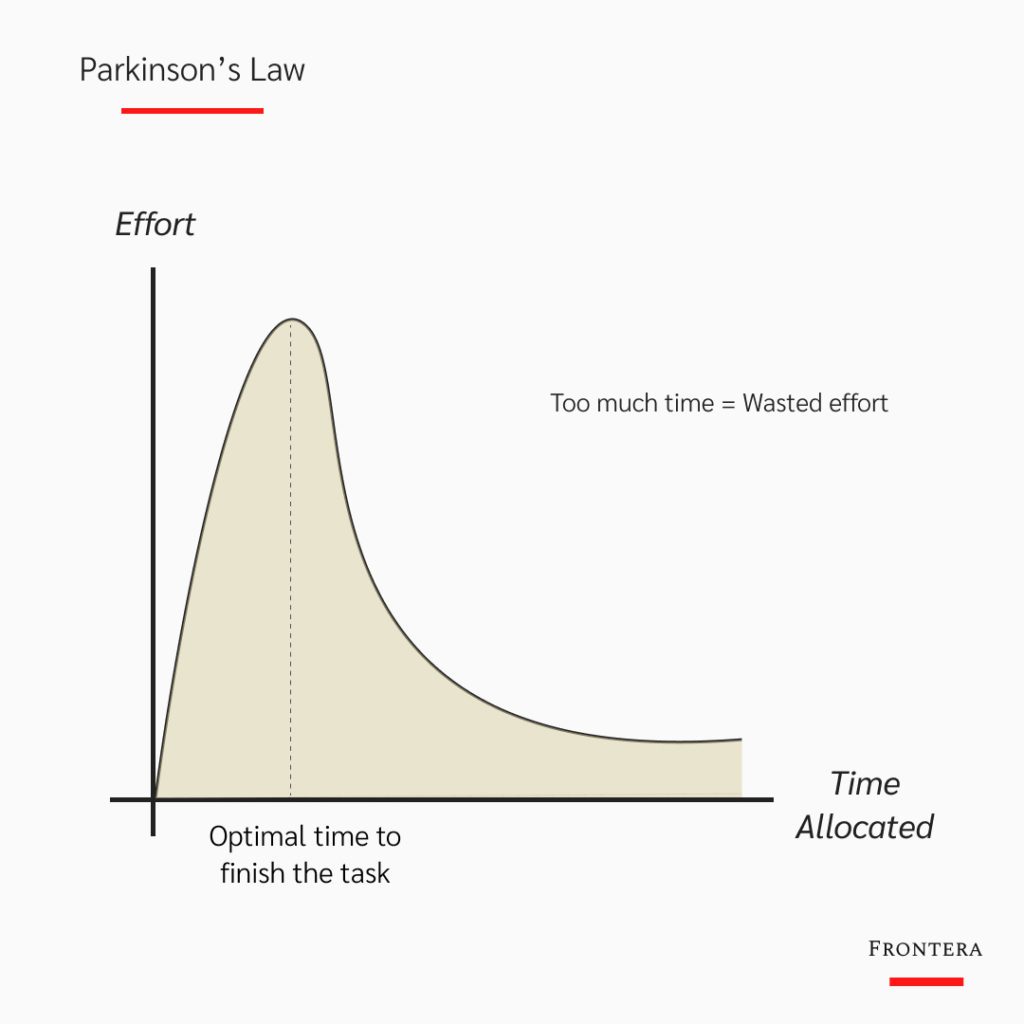
5. The Law Of Reciprocity
The Law Of Reciprocity is our tendency to reciprocate help or favors.
It’s one of the persuasion principles from Cialdini’s book Influence.
People feel obliged to give back if they receive something first.
It’s heavily used in sales and marketing.
People are more likely to buy if a brand gives free samples first. Waitresses who bring candy with the bill receive more tips.

6. Framing Effect
The framing effect is one of the most effective tools in public relations and marketing.
People react differently to the same event, product, or price depending on different frames.
10% death risk from a surgery sounds scary, while a 90% success rate sounds safe.
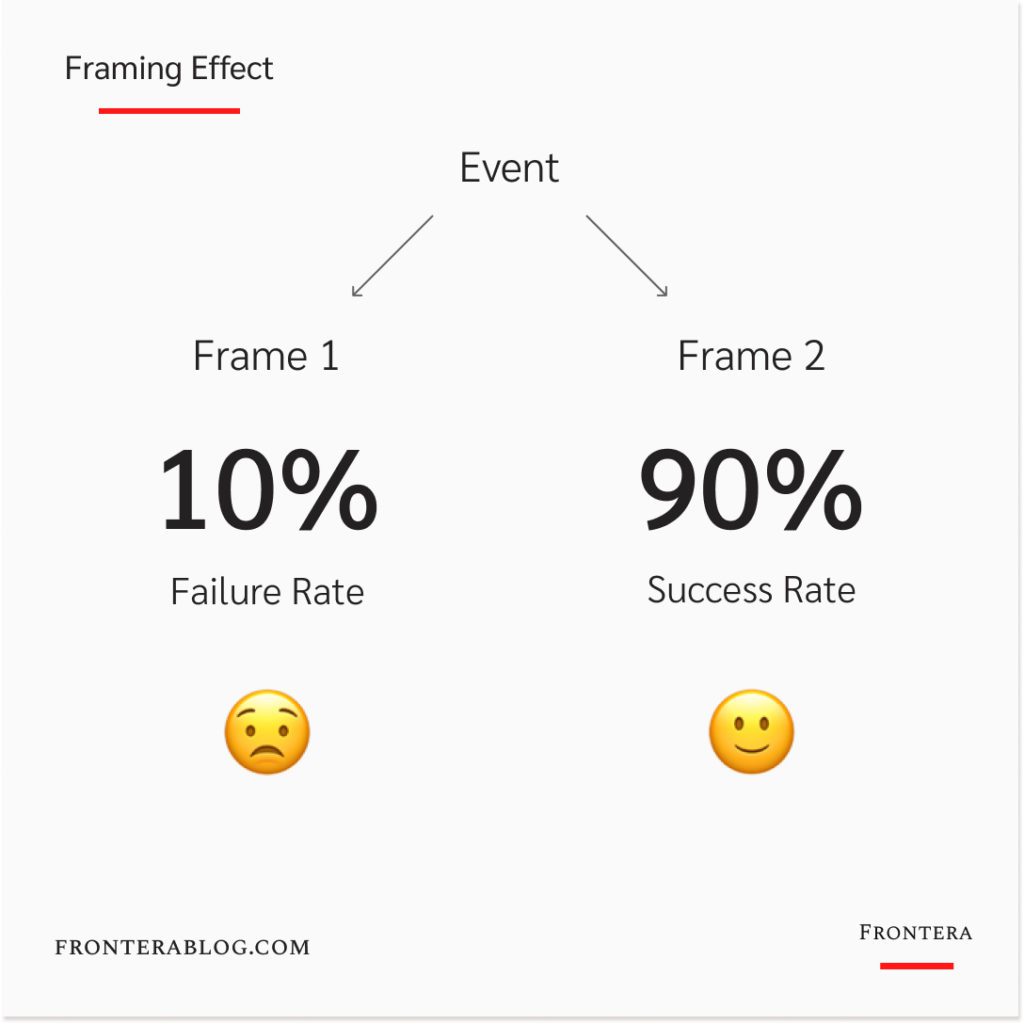
7. The 10/1 Rule
For every active social media account on any platform, there are around 9 passive accounts.
It means whatever your skills and interests are, the moment you start actively sharing; you leave 90% of people behind in your area.
You make your ideas visible, build connections and create unexpected opportunities. They follow.
Mental Model Examples For Business Strategy
1. Blitzkrieg
German war tactic from the second world war.
Most people relate it to speed, but it’s only one aspect. The key is to concentrate all your forces on a single weak point of the enemy.
It’s a useful business tactic to beat bigger competitors. Startups manage to beat corporates with an unlimited budget by channeling all their strength on one point.
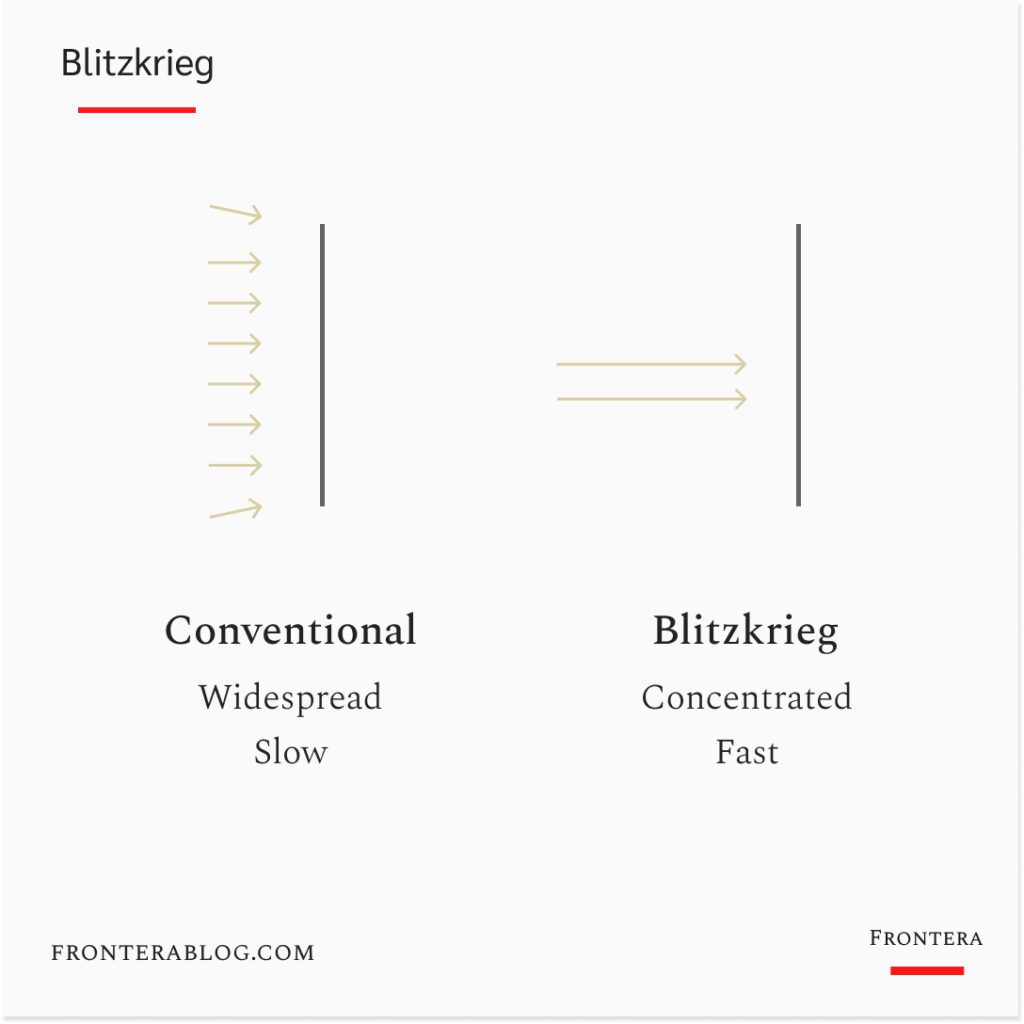
2. Economic Moats
“In business, I look for economic castles protected by unbreachable moats.”
That’s how Warren Buffett answered a question on what he looks for in a business to invest in. And what he meant was competitive advantages that compound over time.
If you have a business, you can build 5 types of moats: intangible assets (like brand power), network effect, cost advantage, switching costs, or natural monopolies.
The bigger the moat, the more likely the business will last.
3. RICE Scoring
RICE Scores are useful to compare and prioritize projects (or features) for your business.
RICE stands for reach, impact, confidence, and effort:
- Reach: How many people, leads, or customers the project will reach
- Impact: What’s the impact of the project on your goal
- Confidence: Chances of getting the impact
- Effort: The cost (time and money) of the project
Use the formula below to calculate each project’s RICE score. The higher the score, the better the project.
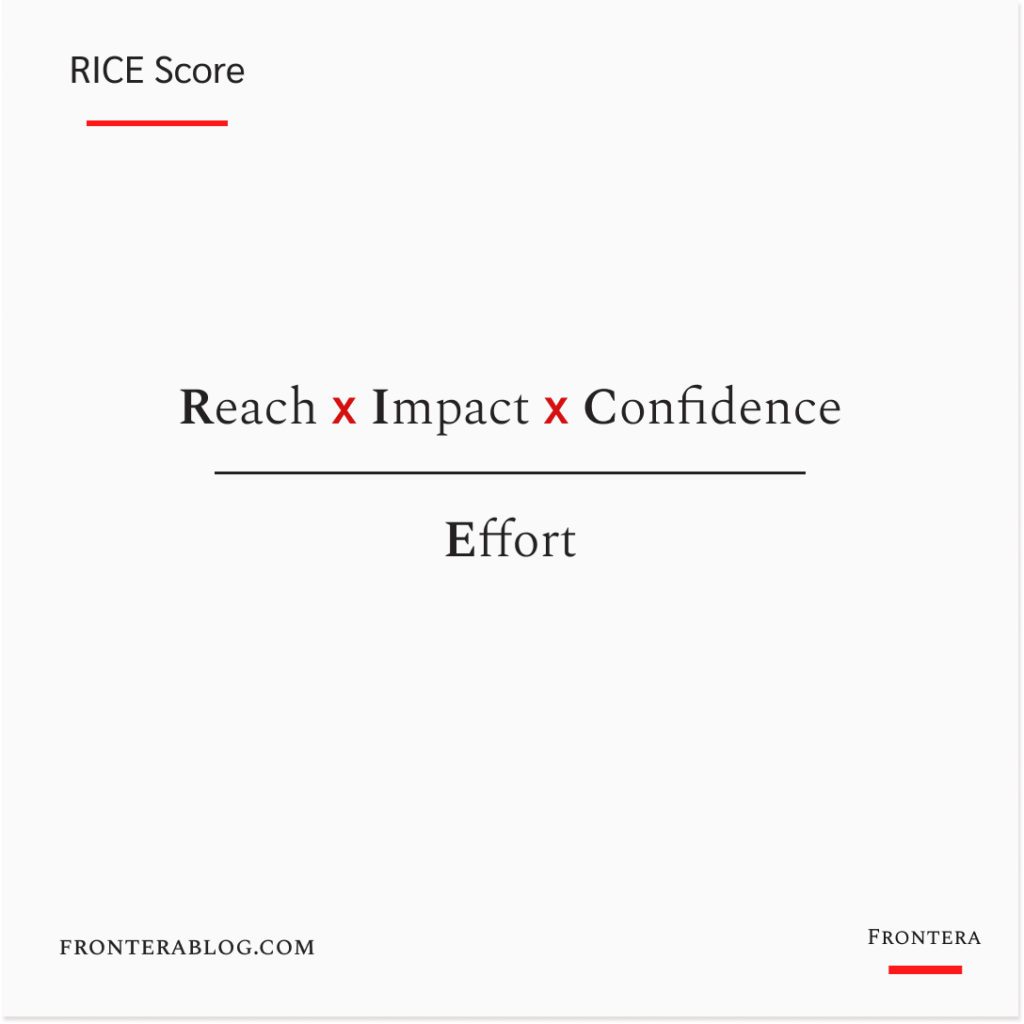
4. Minimum Viable Product
Minimum Viable Product (MVP) is defining the requirements —what is the minimum, what is viable, and what is the product — before starting to work on a project.
It’s a term from Product Management and common practice in software development.
But, it is applicable in different aspects of your life to avoid perfectionism.
So when you have an idea, work on an MVP to test it. It will save you a lot of time and effort.
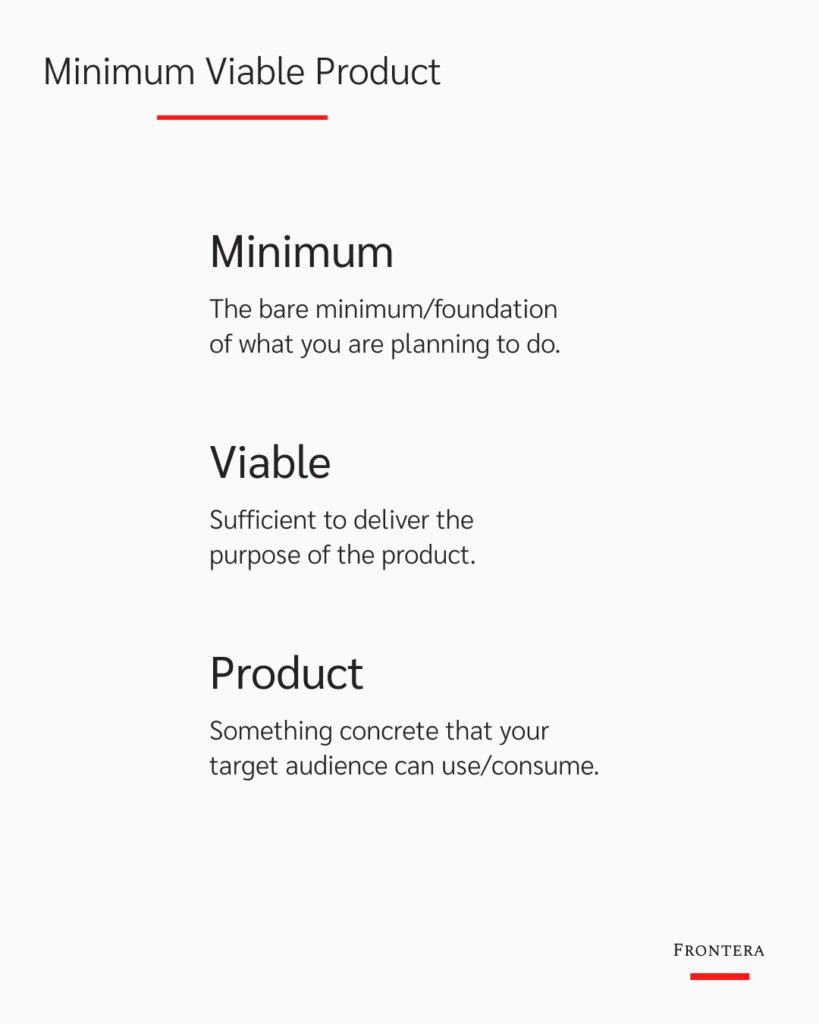
5. Exponential Thinking
Our brains think incrementally by default.
But as Astro Teller said: “It’s usually easier to make something 10x better than it is to make it 10% better.“
So instead of aiming for small improvements, go after exponential gains by changing how you approach a problem.
6. Pre-Mortem
Pre-mortem is a method used in project planning.
You assume the project has failed terribly. Everybody thinks about all the possible reasons that caused the failure.
You can apply it in your life by imagining your “failed self” in 5 years.
What went wrong?
And what are the decisions to avoid them from happening?
7. Force Field Analysis
Every decision requires a change.
And every change has driving and resisting forces.
Executives use Force Field Analysis to assess if the decision is realistic and what’s the priority action to make it easier.
To use it, list what forces will support the change, and what forces will make it harder.
Then give impact points to each of them. If the resisting forces are stronger, you have to eliminate (or weaken) them to achieve your goal.
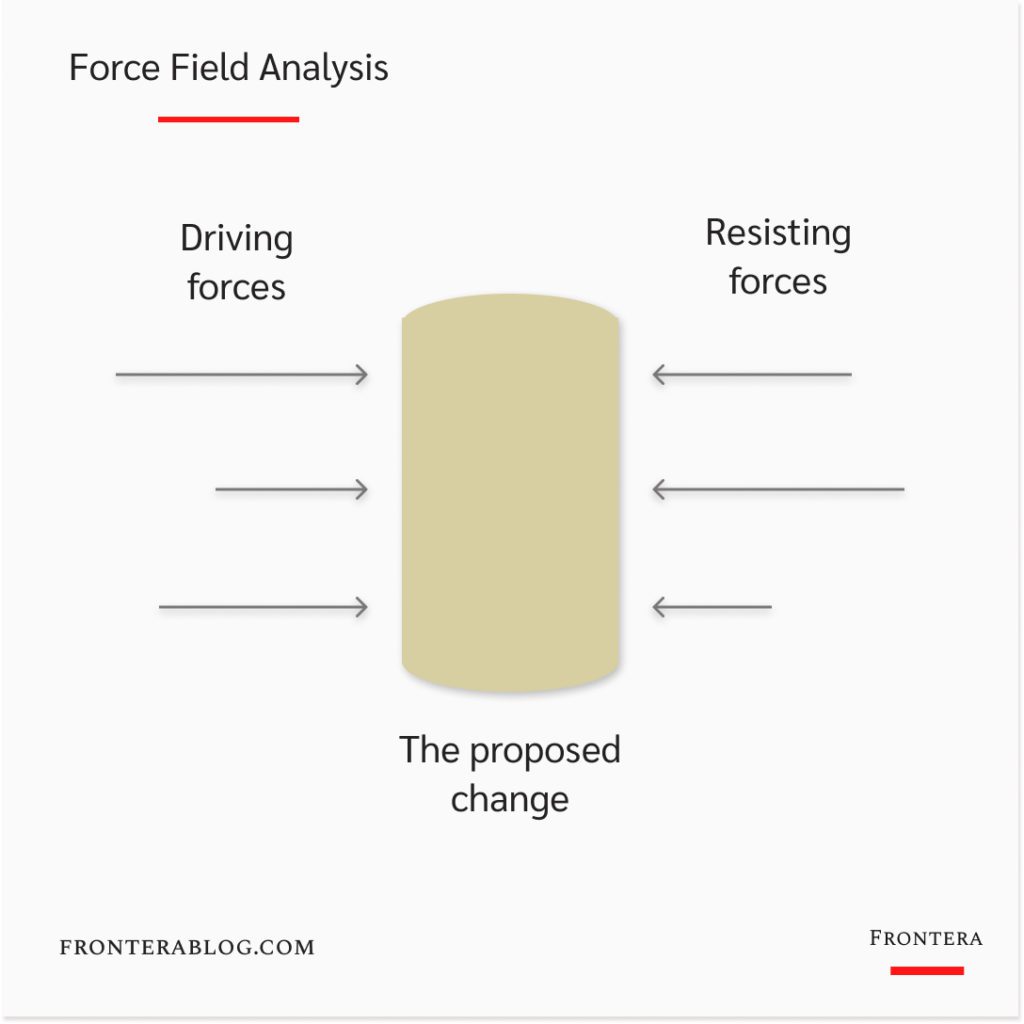
8. Synergy
Synergy is when a combination of companies, talents, or ideas creates more value than the sum of them alone.
Google’s YouTube acquisition is a good example.
It gave YouTube enormous resources to deal with challenges. And Google a social platform as a new advertising channel.
The synergy between Google and YouTube didn’t create value only for them. Today 2.6 billion people use it for entertainment or to learn anything they want. And millions of creators earn their living from YouTube.
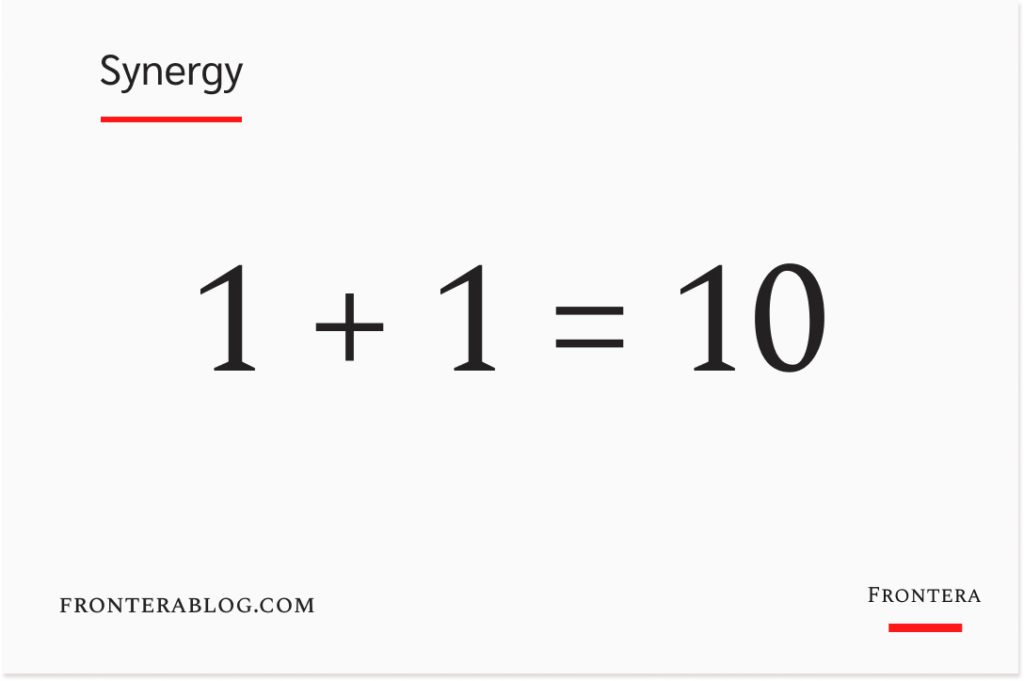
9. Critical Mass
Everything is hard at the beginning.
Started a business? Good luck finding your first 50 customers.
But if you manage to pass this valley of death, your work starts to sustain itself on its own. Customers start coming out of nowhere.
That’s the moment when you reach critical mass.
It applies to ideas, technology, and trends, too.
To use it, choose a game where the odds are in your favor from the beginning (e.g. starting an airline vs. a software company). For some businesses, the valley of death is too long to survive.
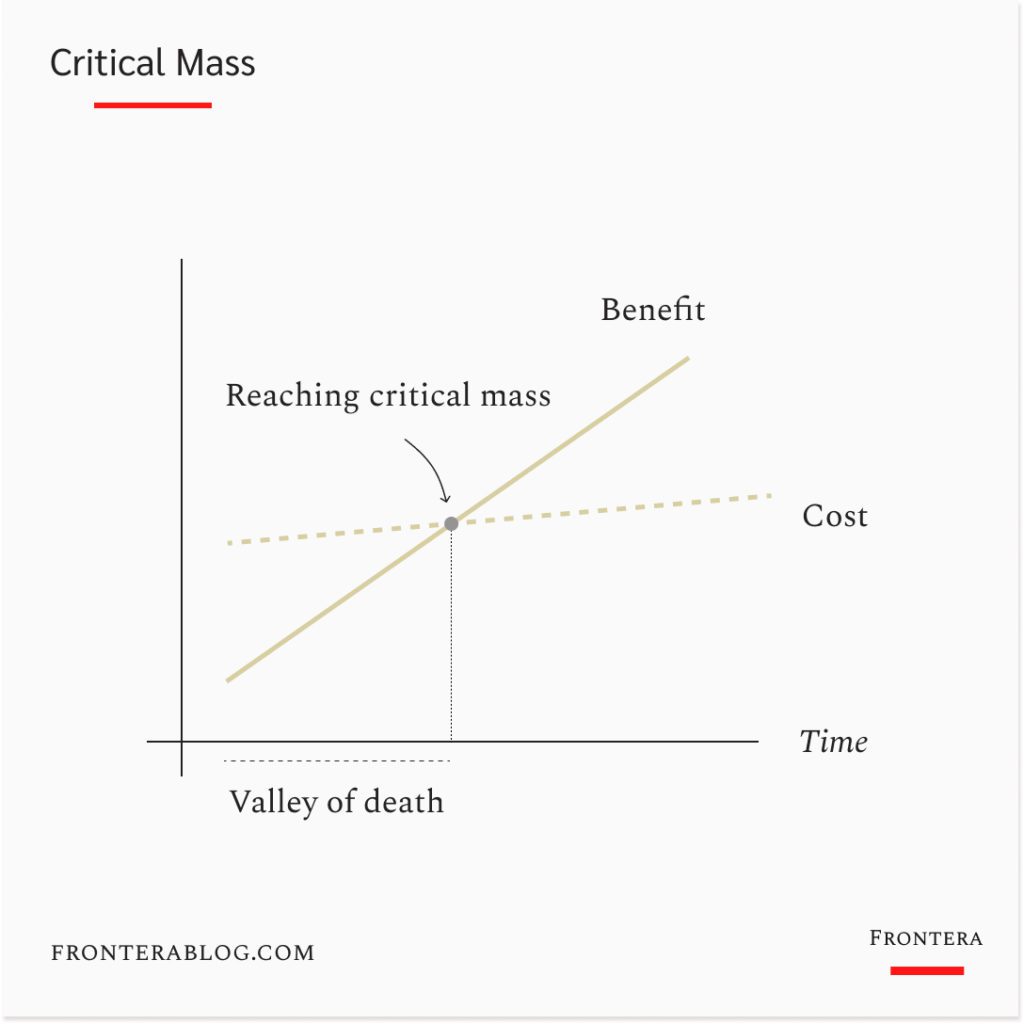
10. The Flywheel Effect
The Flywheel Effect is a framework that shows how businesses become great by building a virtuous cycle.
Jim Collins defined it in his book Good to Great after he researched patterns of successful companies. He found that great companies were never born with a single breakthrough.
It was never a miracle product, innovation, or restructuring that made the difference.
They all found a competitive advantage.
And built everything around it over the years, until it became a virtuous cycle — where each part of the business amplified the advantage even more.

11. The Law Of Diminishing Returns
The law of diminishing returns is a concept from economics that indicates after a certain point, increasing only one input starts producing fewer returns.
Henry Ford realized this with work hours. He improved the productivity of Ford workers by reducing the weekly work hours from 48 to 40.
So after an optimal point, adding more time, money, or resources to a problem doesn’t give you the same benefit.

12. Systems Thinking
Systems thinking is to think beyond the individual parts and see how they interact to create an outcome as a whole.

Save these mental model examples to reflect on them from time to time —I’ll keep updating this post with new ones.
–
Found this article useful?
Then you’ll love the How Brands Win Newsletter.
Get the “5 Mental Models to Differentiate Your Business” guide when you join. It’s free.
